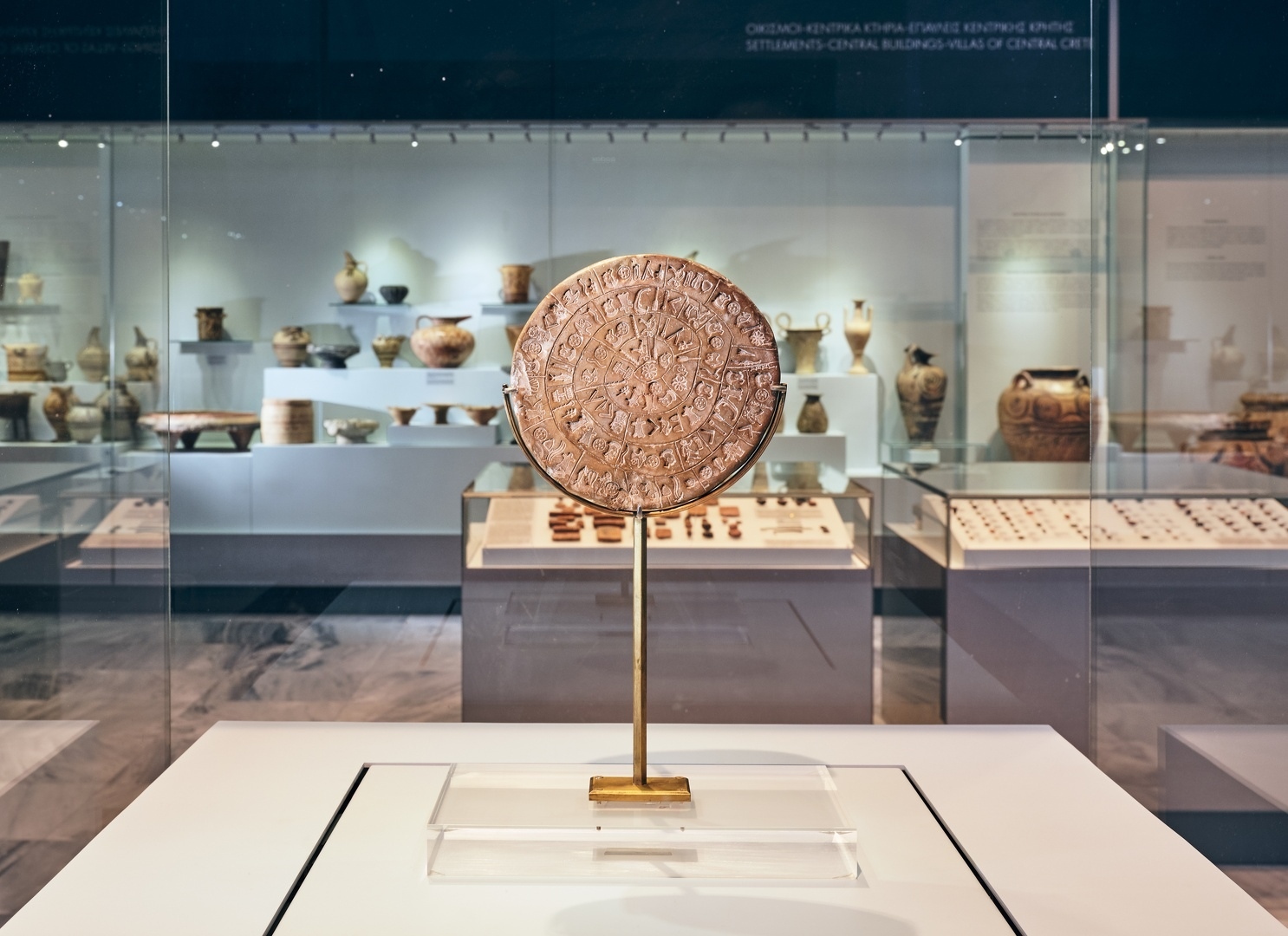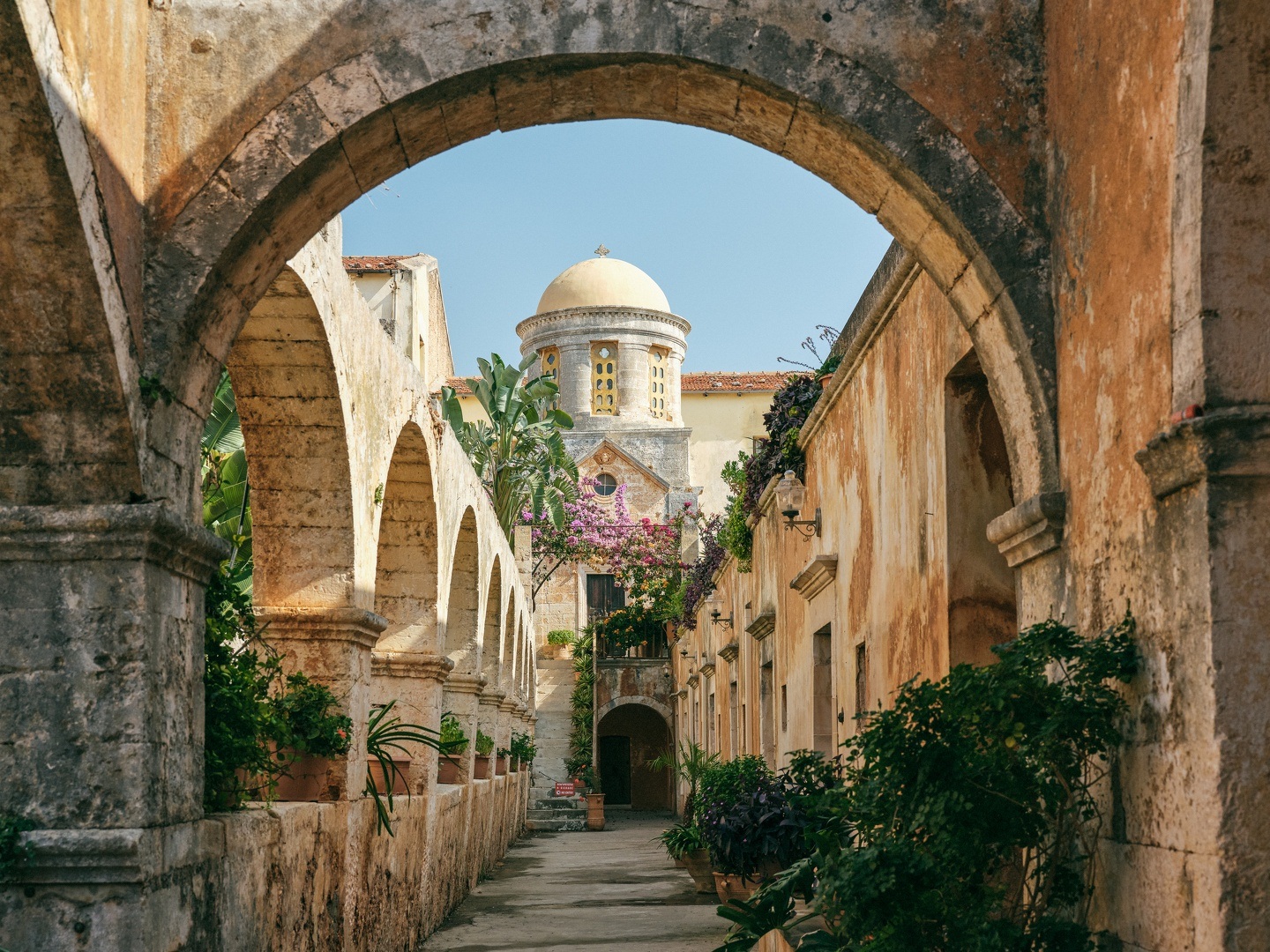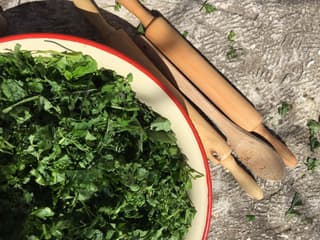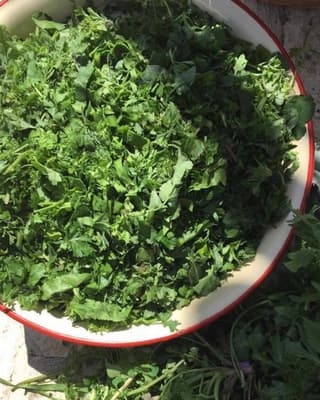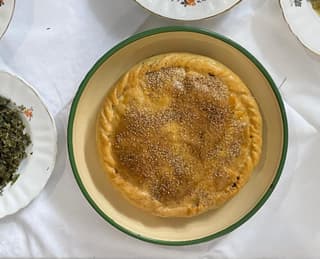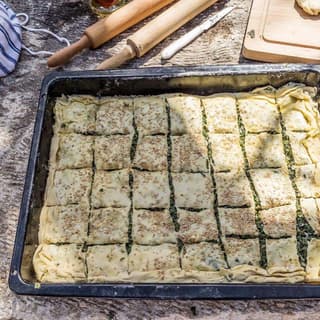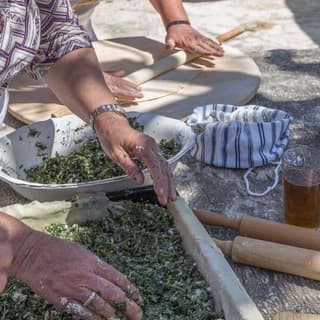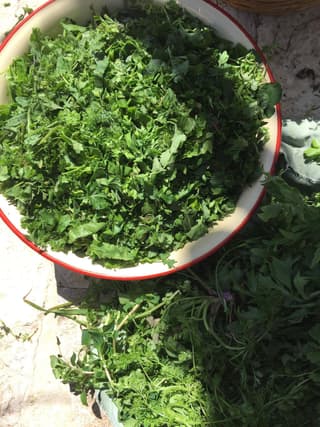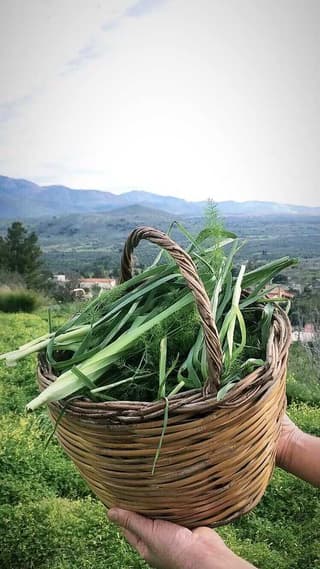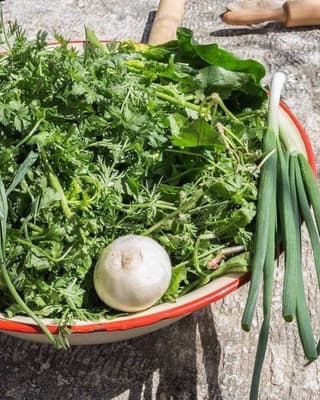
Ingredients for the dough:
- 1 kg flour
- A pinch of salt
- 1/4 wine glass of olive oil
- 3/4 wine glass of raki
- Juice from a small lemon
- Approximately 1 to 1 1/2 glasses of water (adjust as needed)
Ingredients for the filling
2 kilos of yachnera greens (common poppy, black bryony, broadleaf plantain, milk thistle, dock, confused Hawk's-beard, goatsbeard, white mustard, fennel, kale, milkweeds, wild lettuce, borage, chicory, white hedge-nettle, wild parsley, wild celery, beet, bristly oxtongue, sow thistle, common mallow, wild leeks, nettles, shepherd's-needle, marjoram, lettuce, Mediterranean hartwort).
1 bunch of spring onions, finely diced
2 large onions, finely diced
1 glass of olive oil
Salt, pepper, and cumin
Procedure
Step 1: Prepare the Dough: Place half of the flour in a bowl, create a well in the centre, and add the ingredients for the dough. Mix well, gradually adding the remaining flour until a medium consistency dough forms, ensuring it doesn't stick to your hands. Cover the dough with a clean cloth and allow it to rest for approximately an hour.
Step 2: Prepare the Filling: Thoroughly wash the greens and place them in a colander to drain excess water. Proceed to finely chop them into small pieces.
Heat olive oil in a deep pot over medium heat. Add the onions and chopped greens, and sauté them until softened. Then, season with salt, pepper, and cumin to taste.
After cooking, transfer the greens to a colander to drain completely, allowing any excess liquid to be removed. Let them cool before further use.
Step 3: Prepare the Phyllo Pastry: Take a portion of the dough and, using a rolling pin, roll out a sheet of phyllo pastry to a somewhat thick consistency for the base. Grease a baking pan and place the phyllo sheet in the pan, ensuring it extends beyond the edges of the pan. Spread the yachnera filling evenly over the phyllo sheet. Roll out another sheet of phyllo pastry and cover the entire surface, joining it with the bottom sheet.
Step 4: Beat 1 egg with a dash of olive oil, then use a pastry brush to lightly coat the top phyllo sheet with the egg mixture. Sprinkle plenty of sesame seeds over the pie.
Bake in a preheated oven at 170 °C for about an hour.
Lena Igoumenaki
President of the Cretan Cuisine Festival Association
Cretan Cuisine Festival
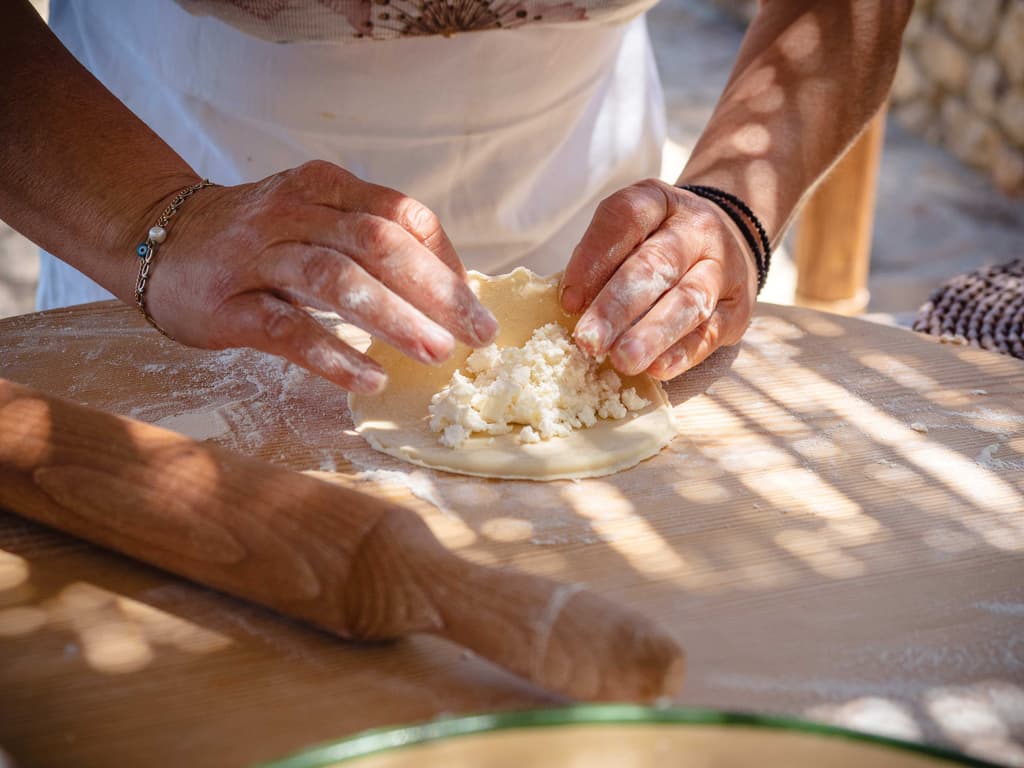
Mizithropites: Authentic Cretan Pies

Meat cake
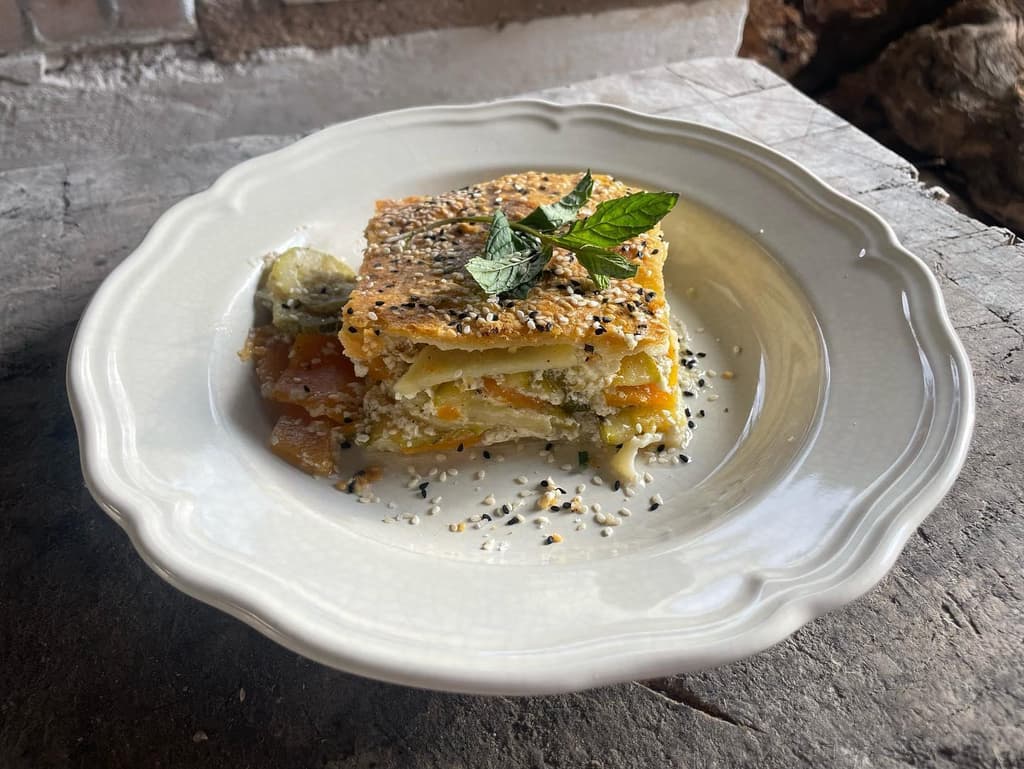
Chania Boureki or Courgette Boureki
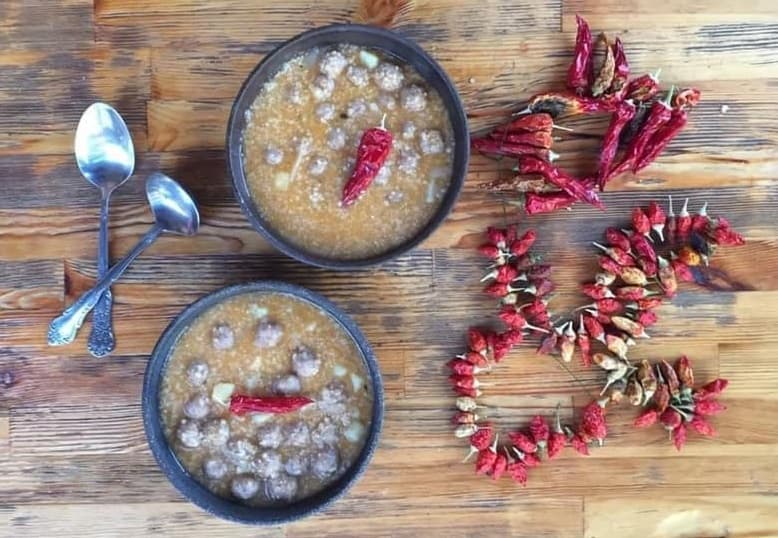
Topia (Balls)
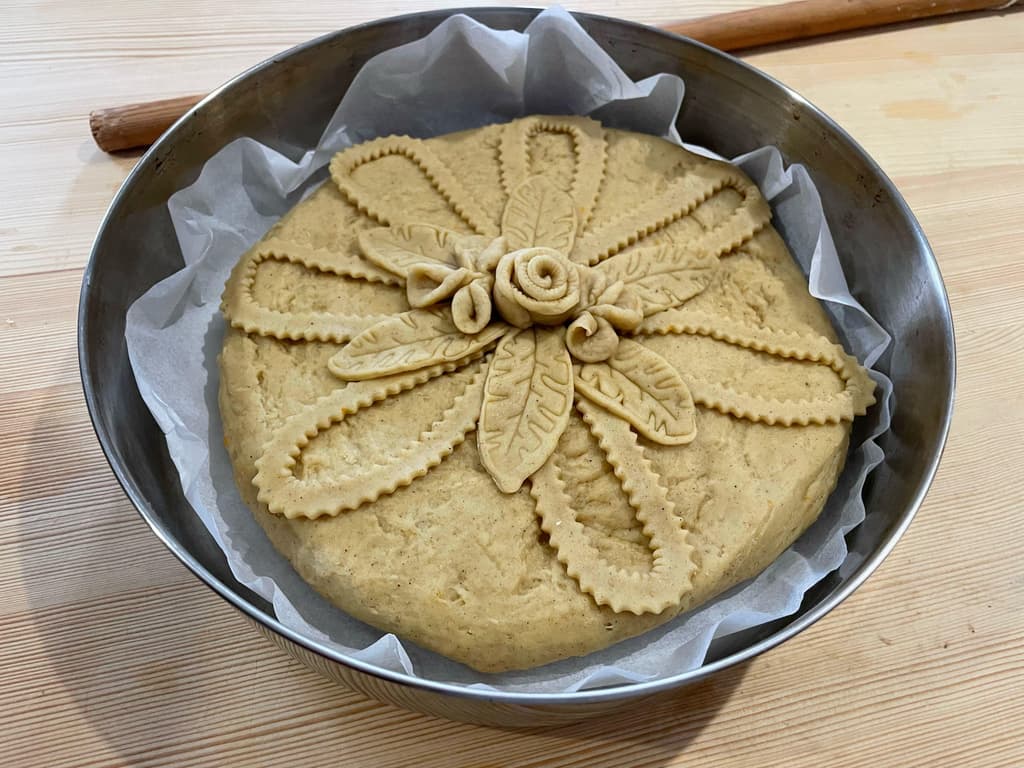
The Traditional 'Bread of the Year'
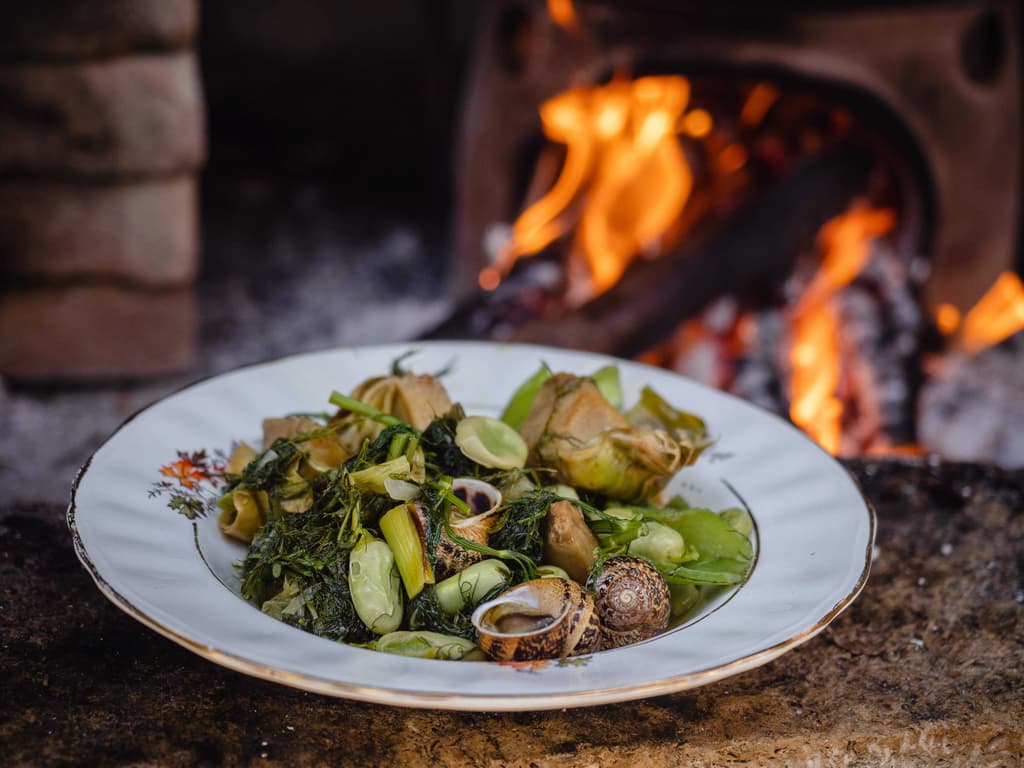
Snails with Broad Beans and Artichokes
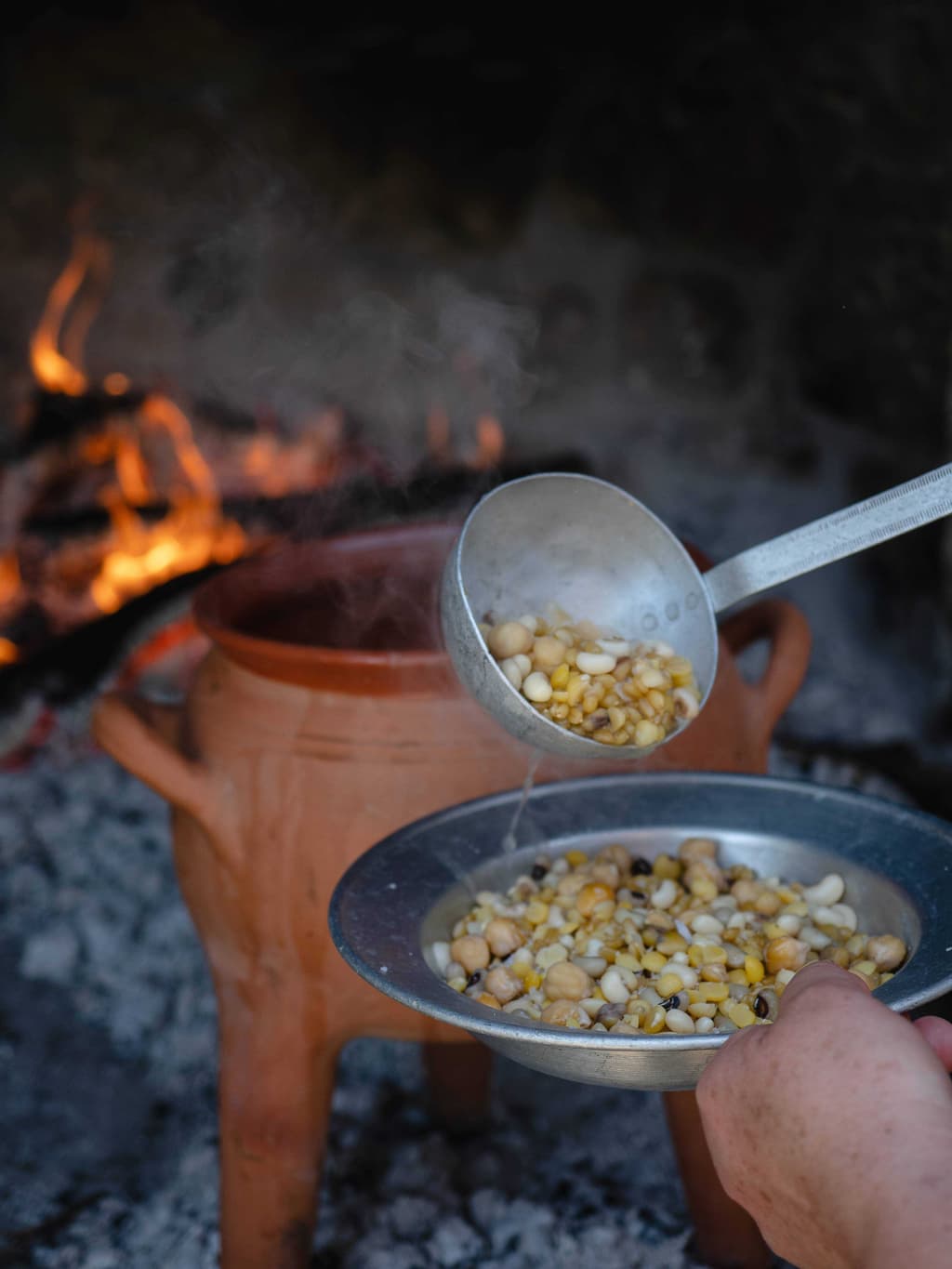
Cretan Ospriada or Palikaria (A Legume Dish)
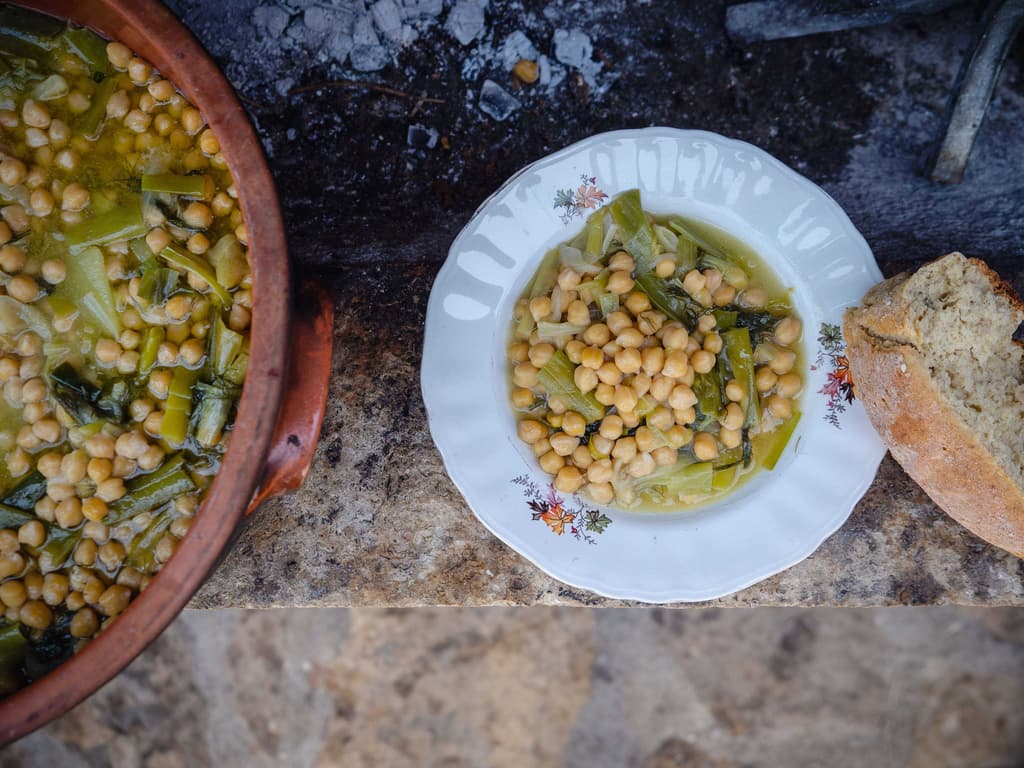
Chickpeas with Wild Leeks, Flour and Lemon Sauce
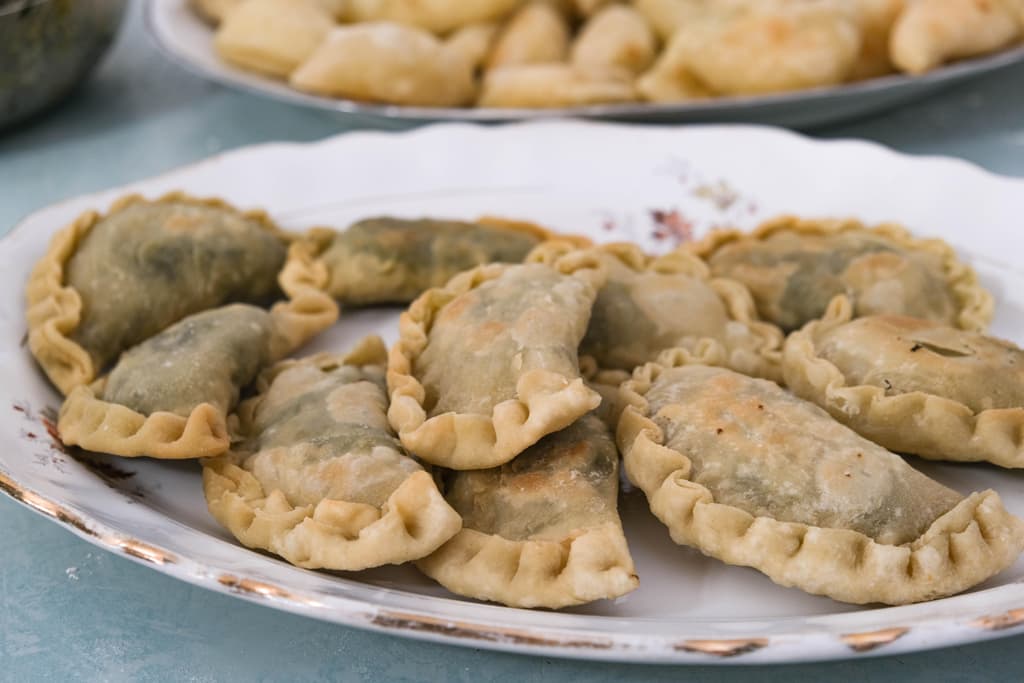
Pies with ‘Yachnera’ Greens
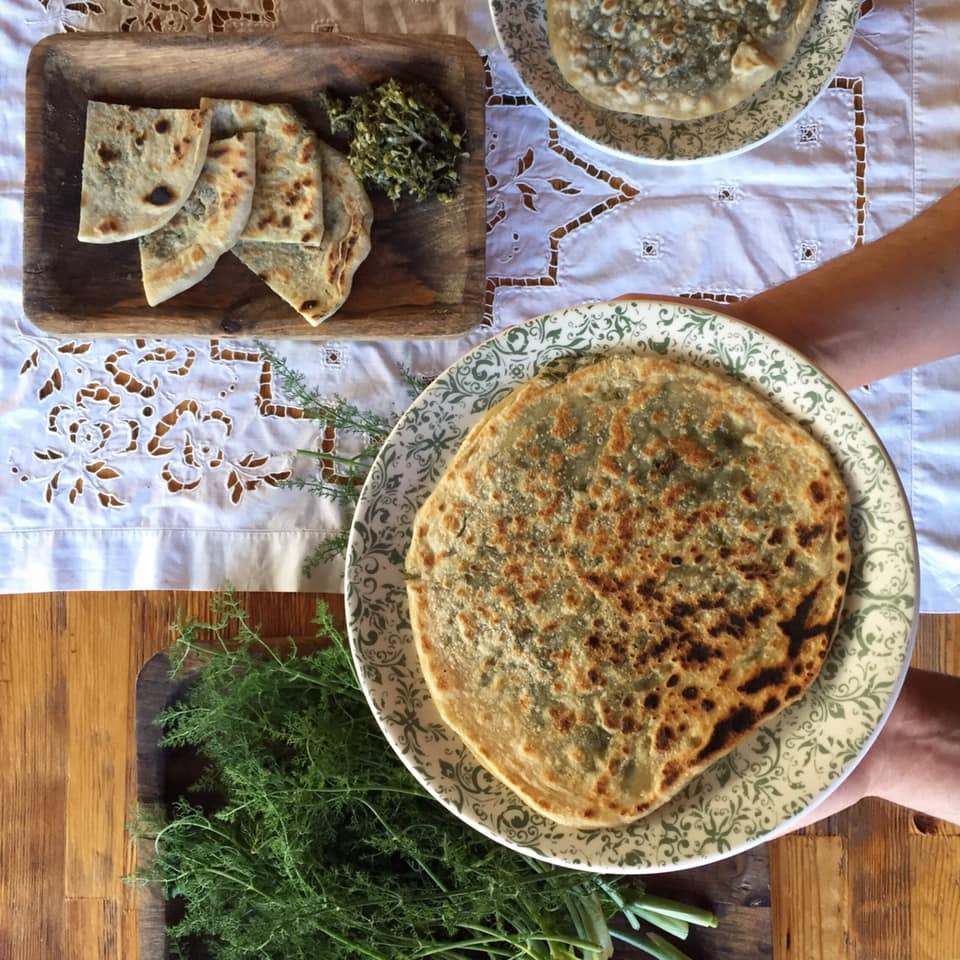
Fennel Pie

Sfakian Pie or Sfakianopita

Biscuits with Sesame Seeds

Sweet Rice Pie or 'Tzoulamas'
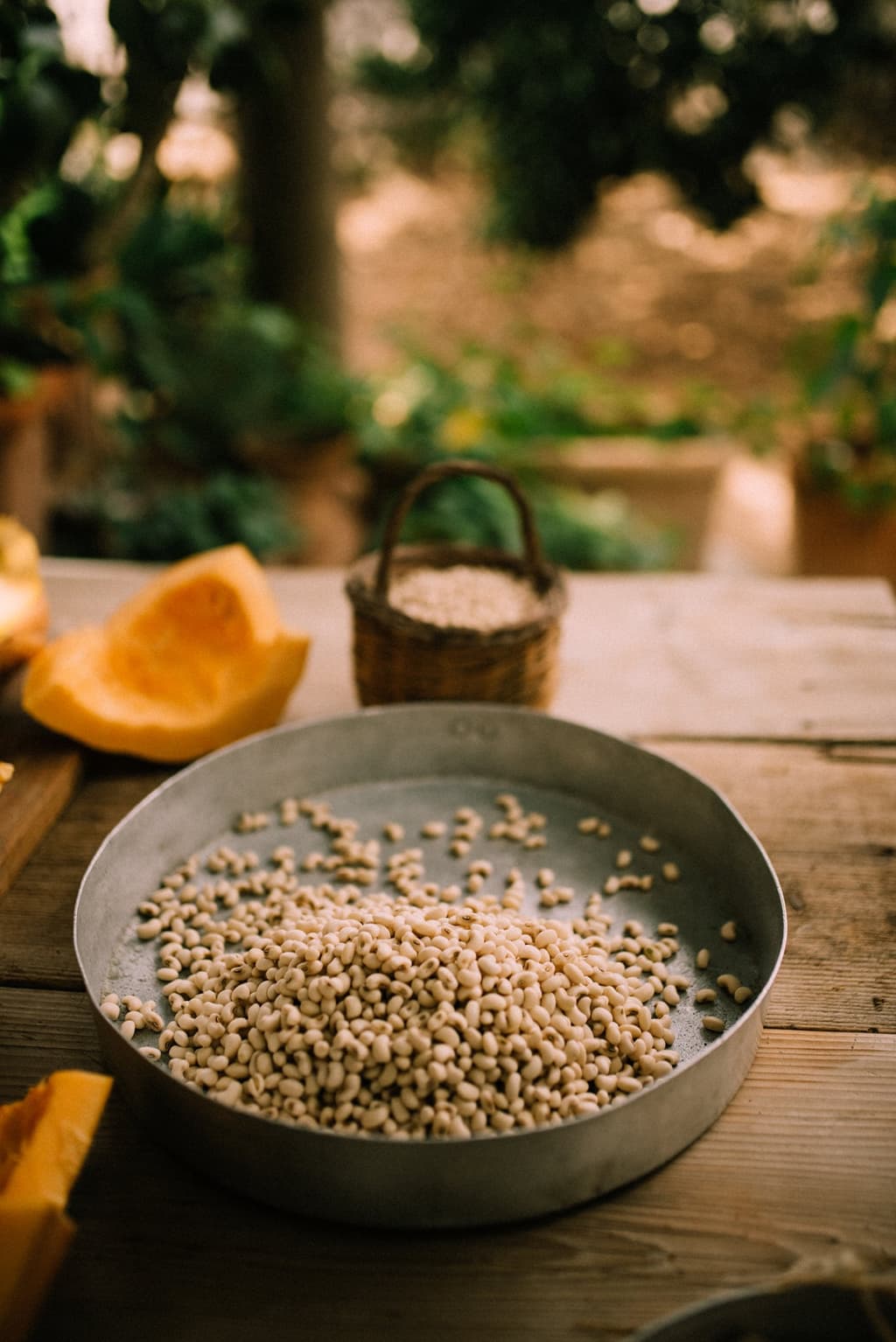
Apostoli White-Eyed Bean
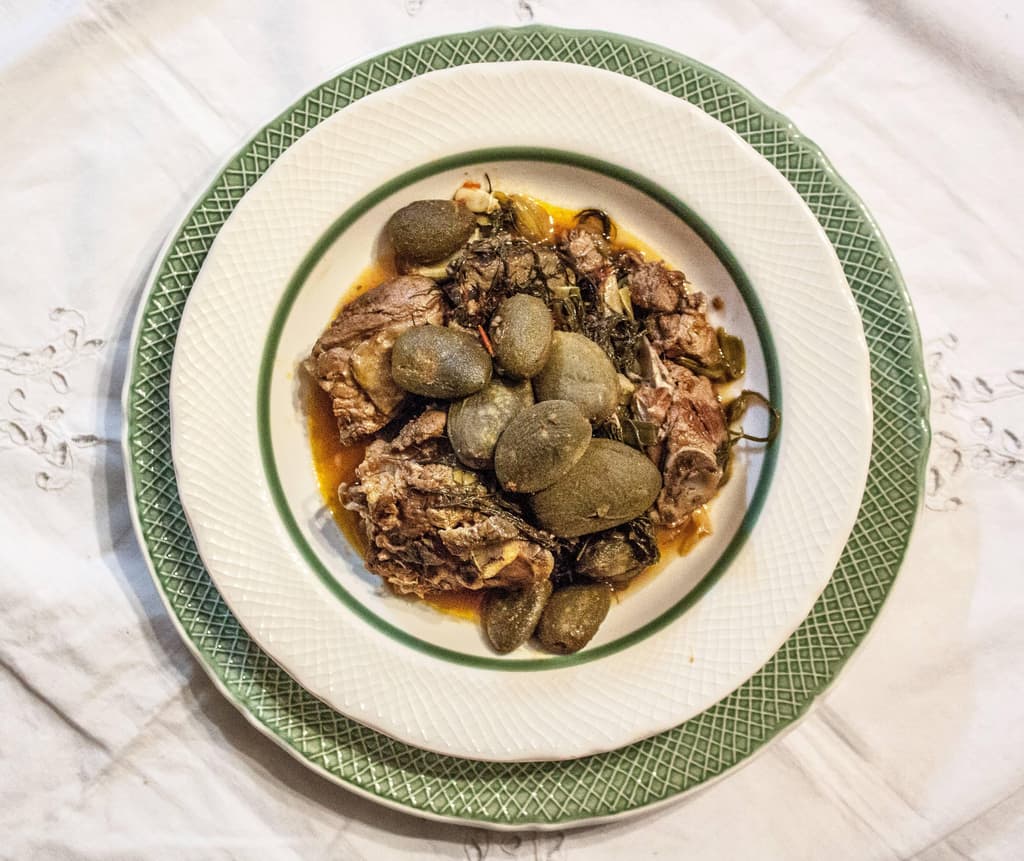
Almond-Infused Goat Dish with Fennel: A Fresh Delight

Lazarosavato
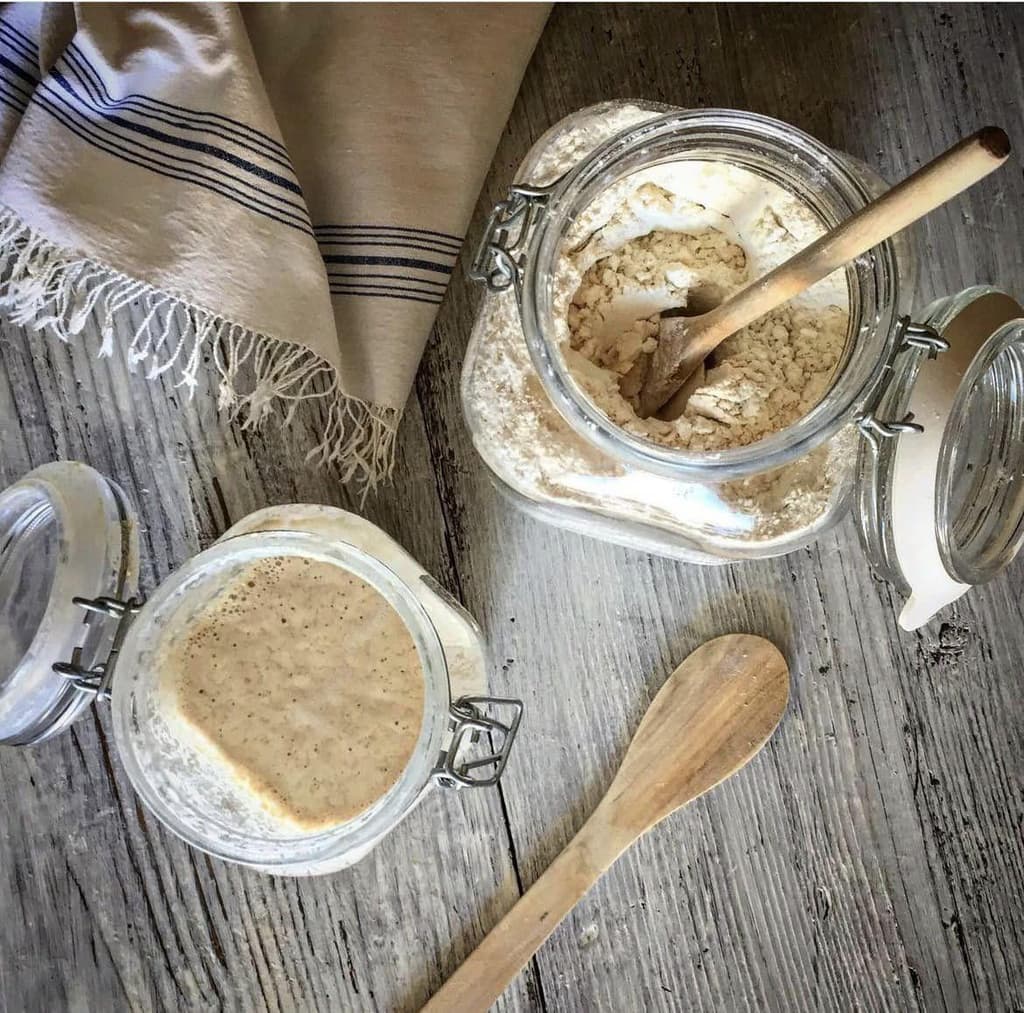
The Holy Week Sourdough
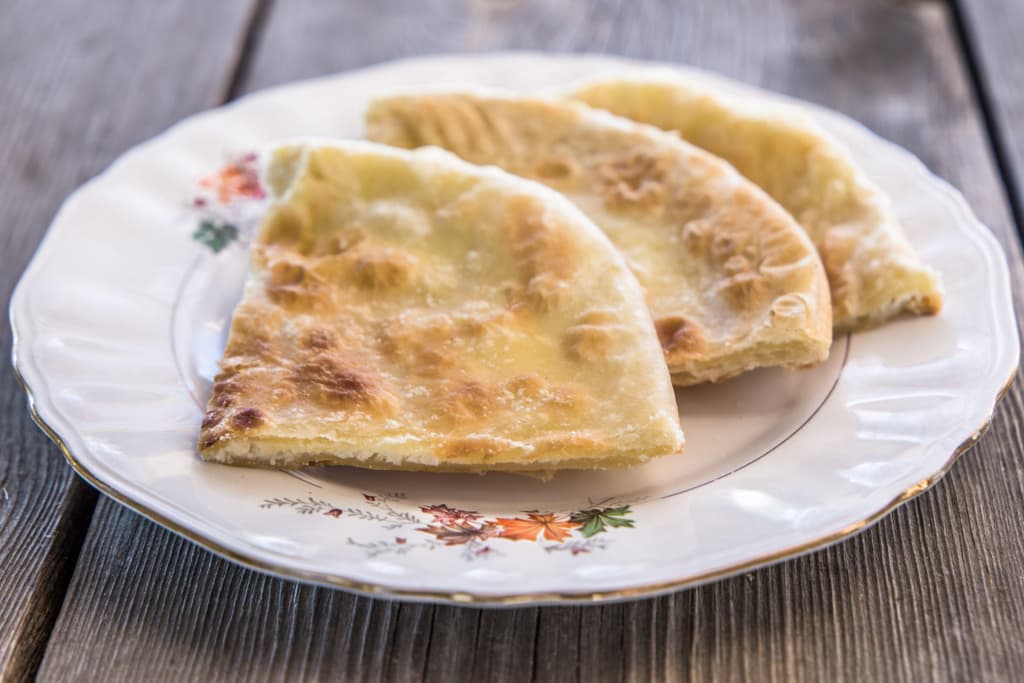
Nerati Mizithropita
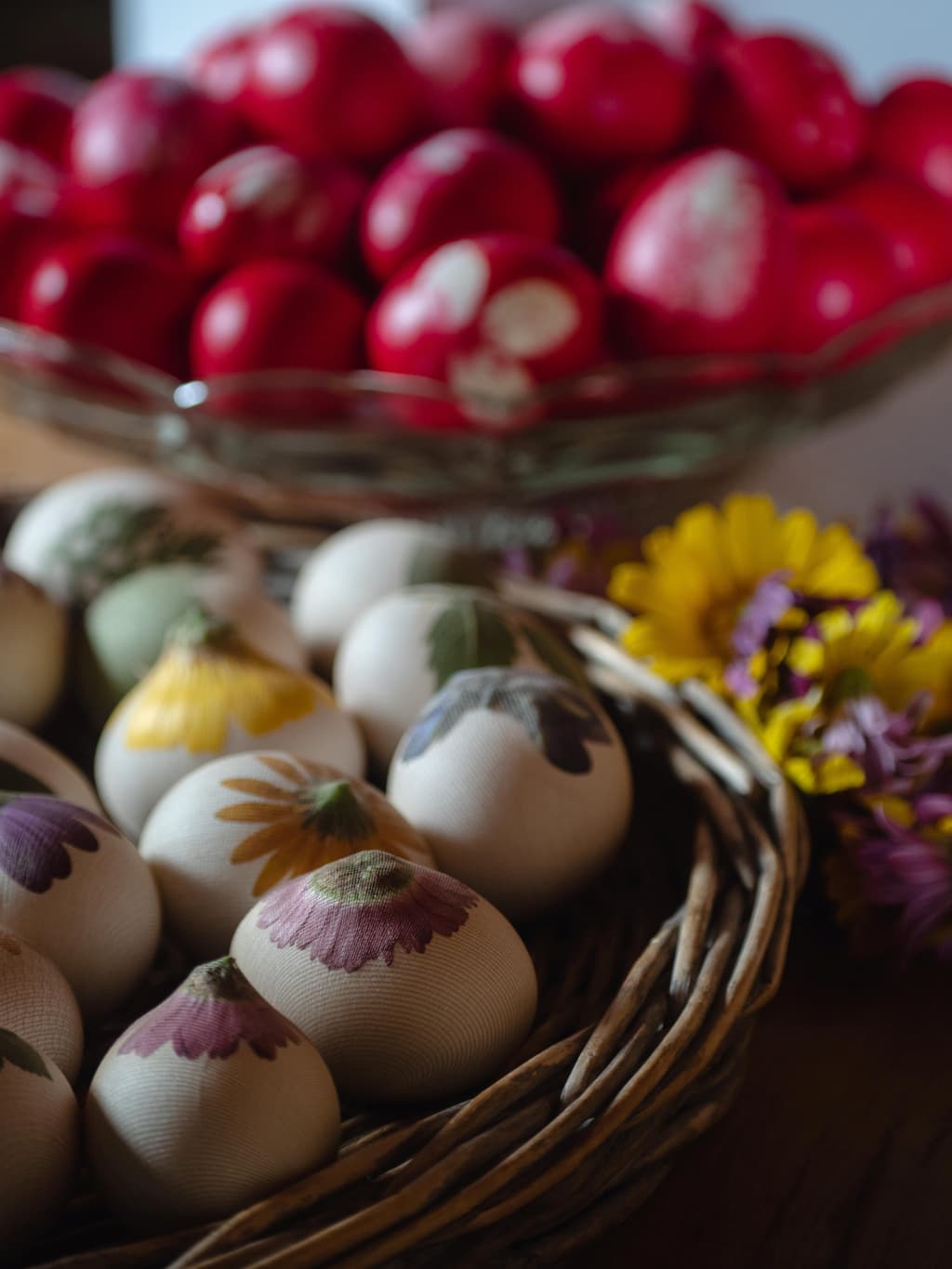
Easter Eggs
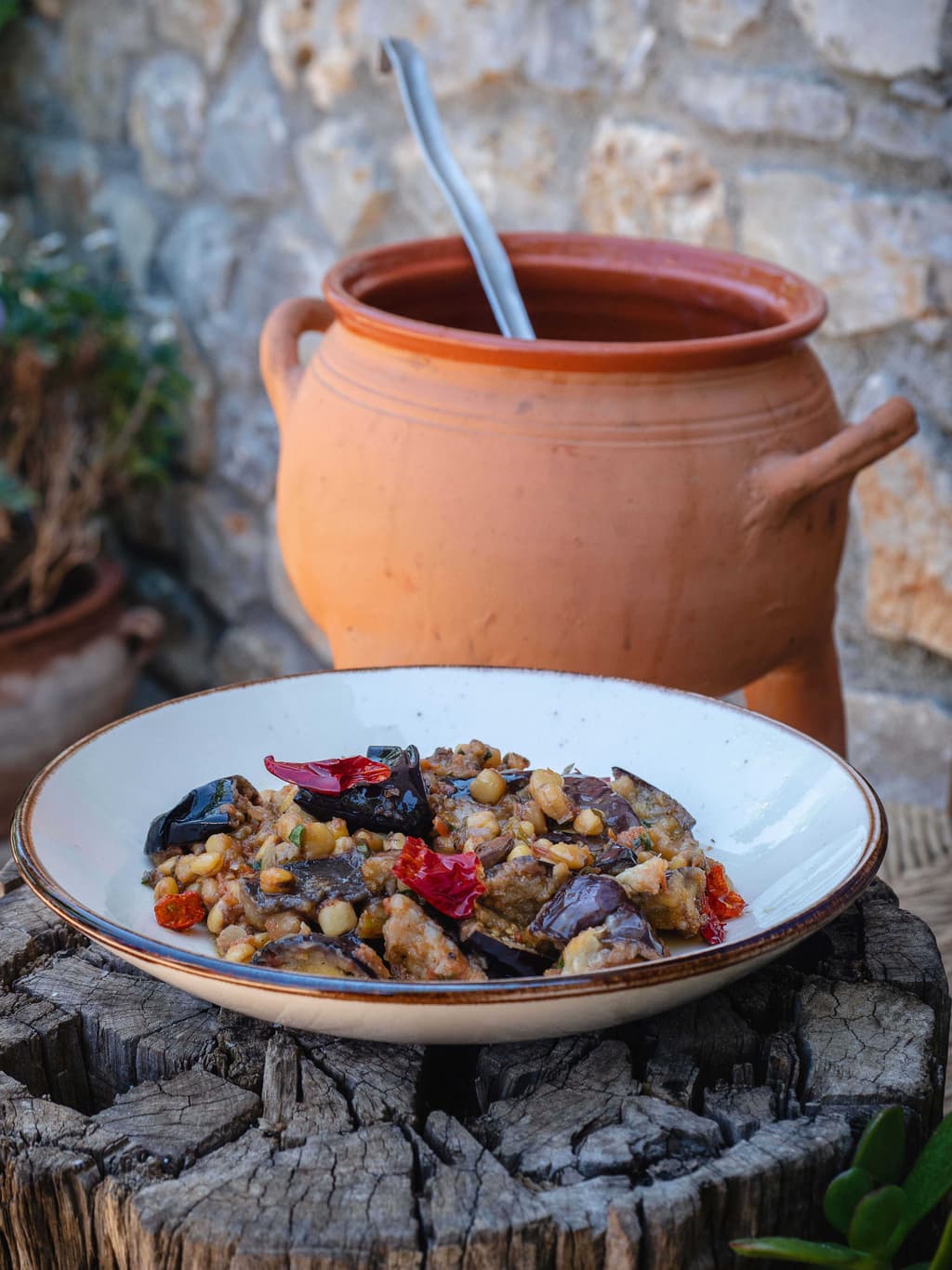
Kalikota
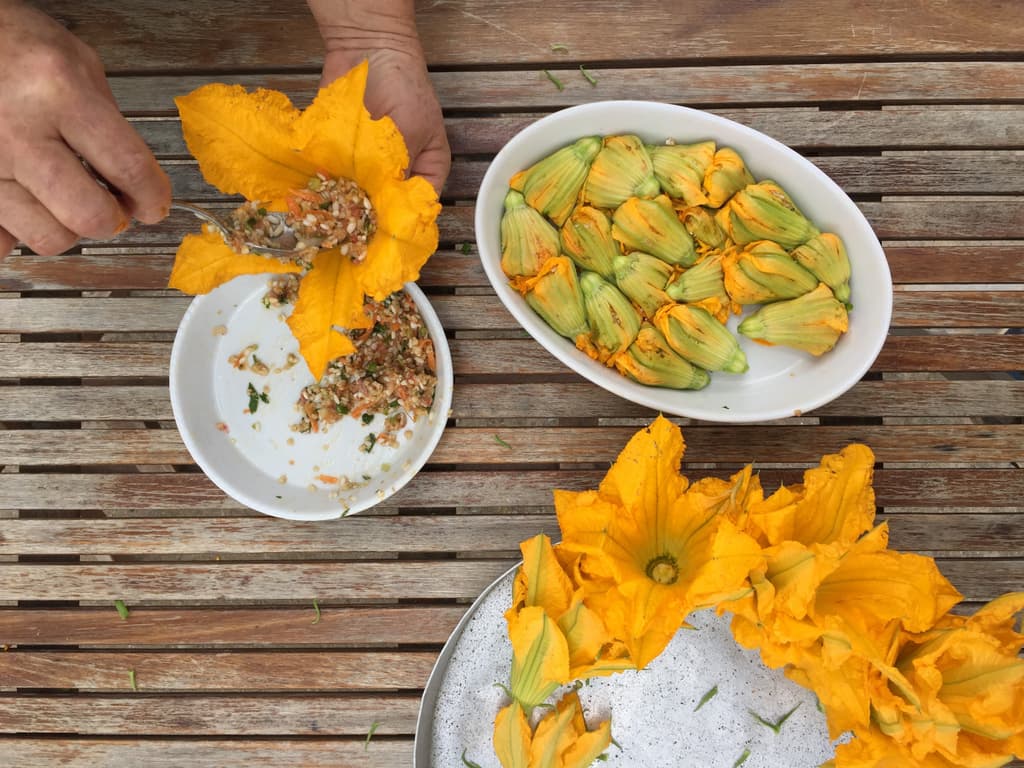
Stuffed Courgette Flowers
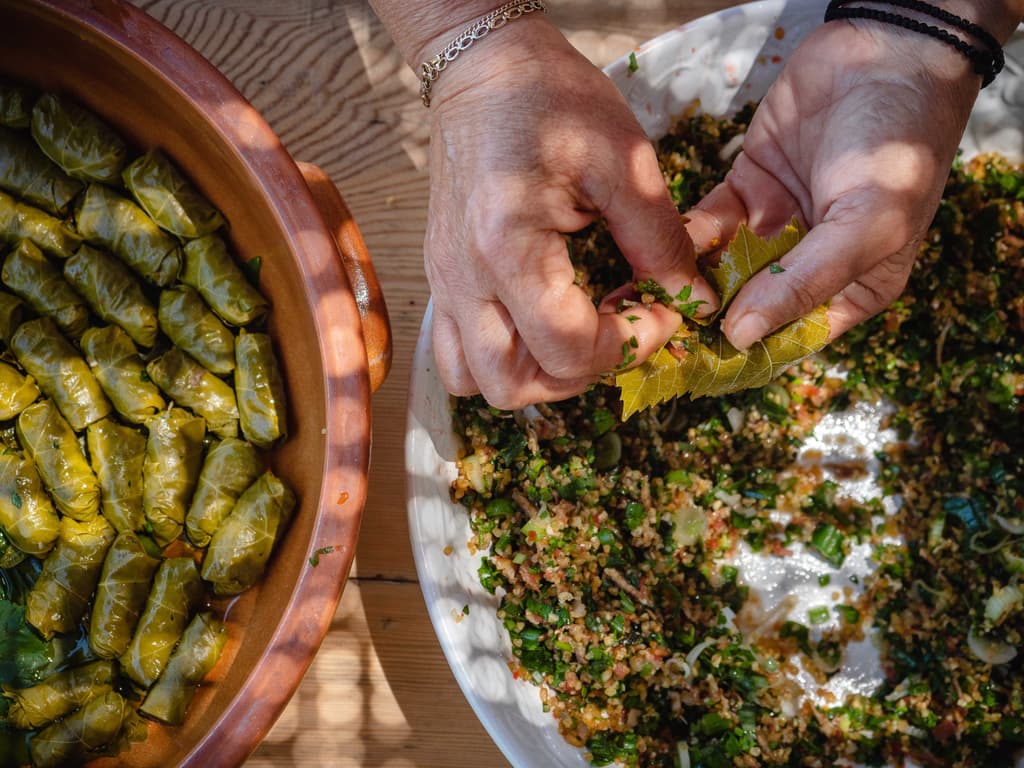
Stuffed Vine Leaves

Cracked Wheat and Snails
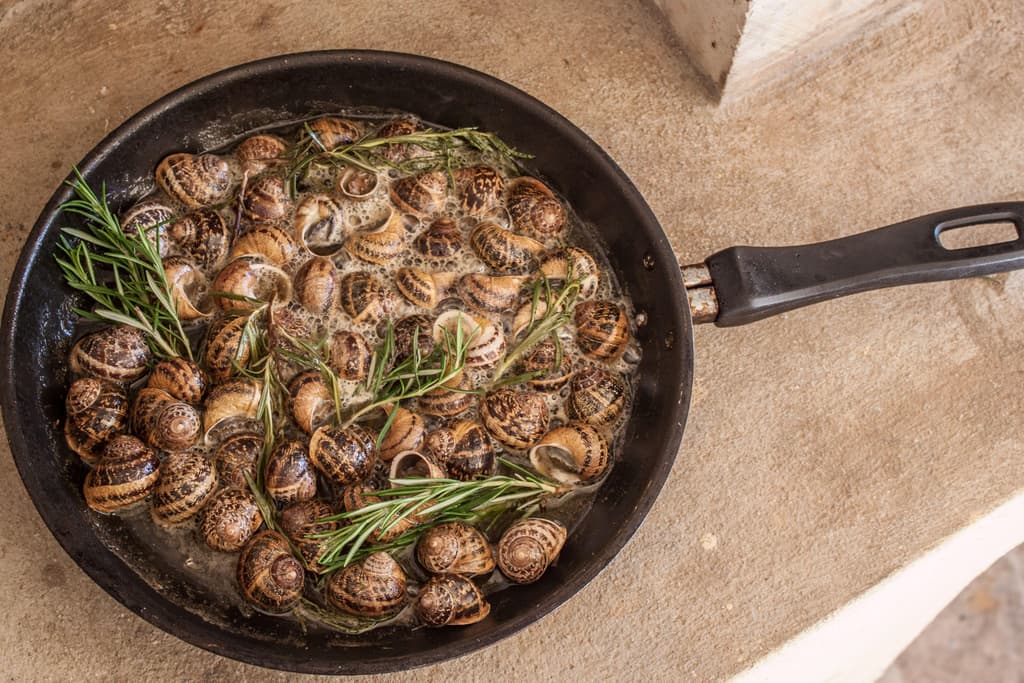
Chochli Boubouristi (Snails Face Down)
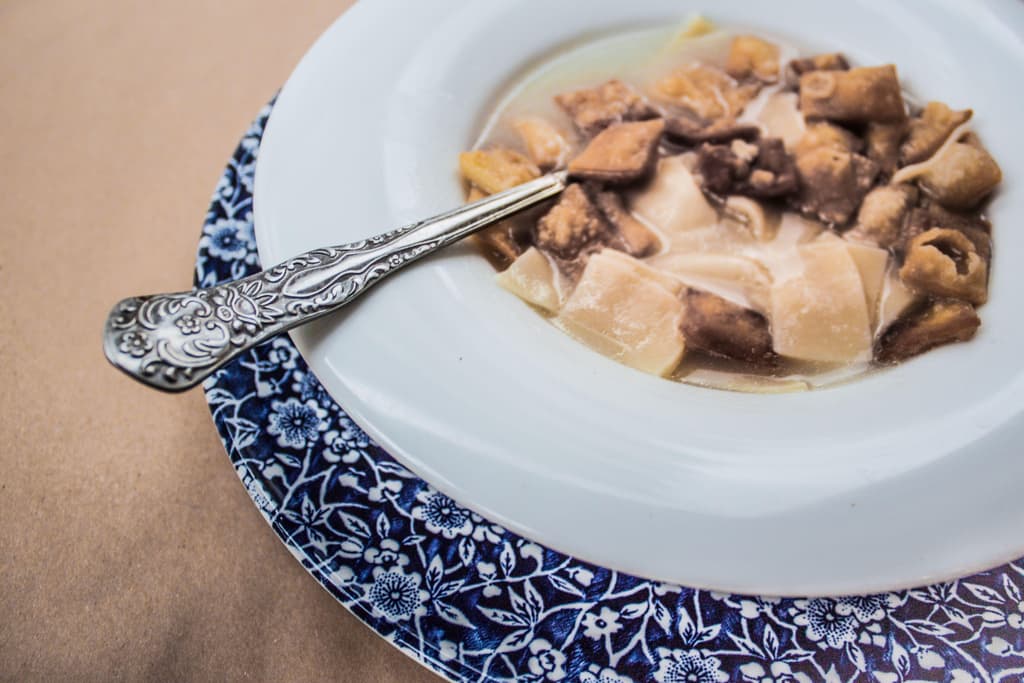
Mangiri
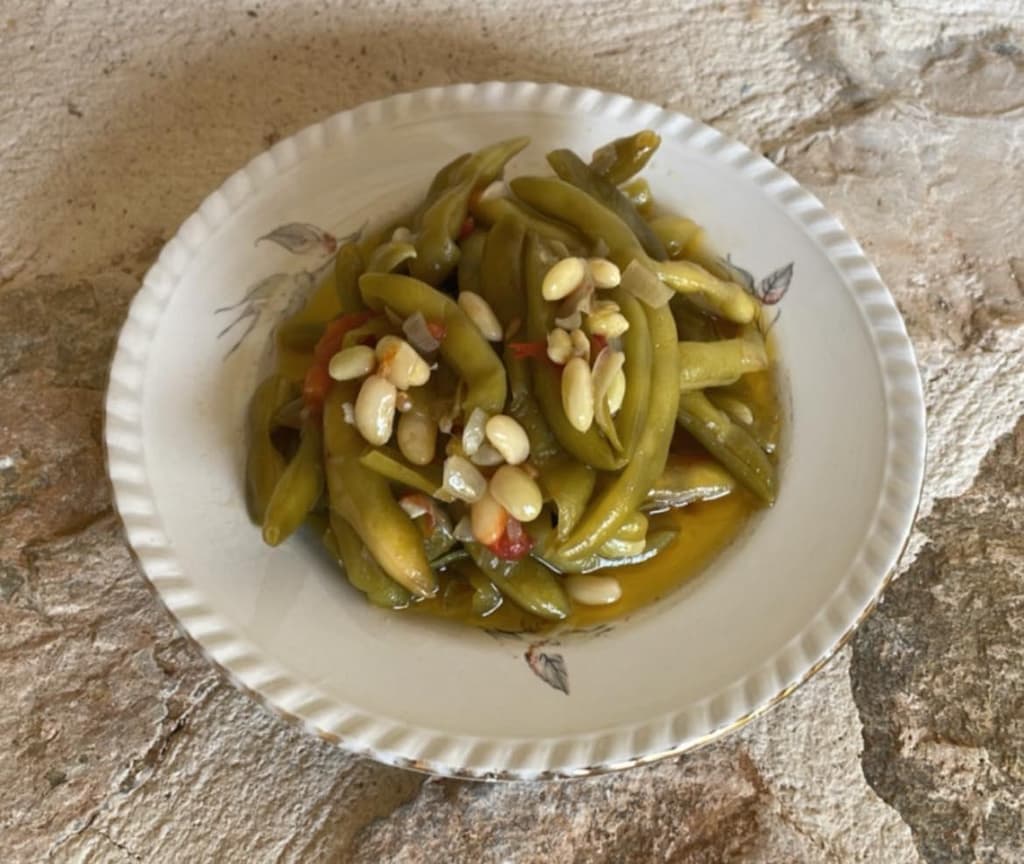
Symian Bean
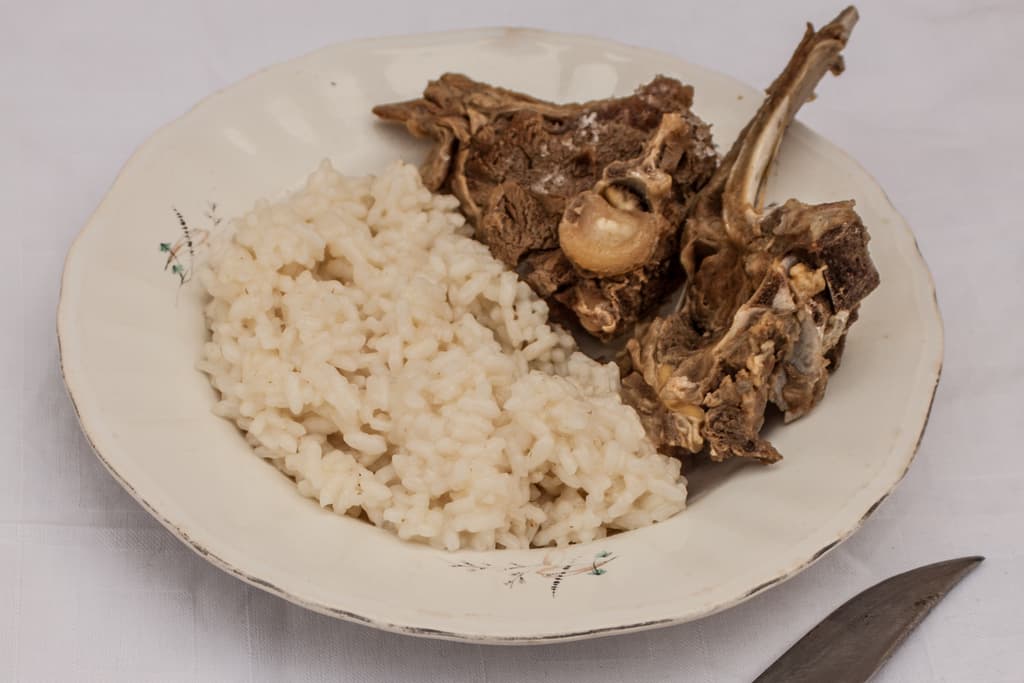
Cretan Pilaf
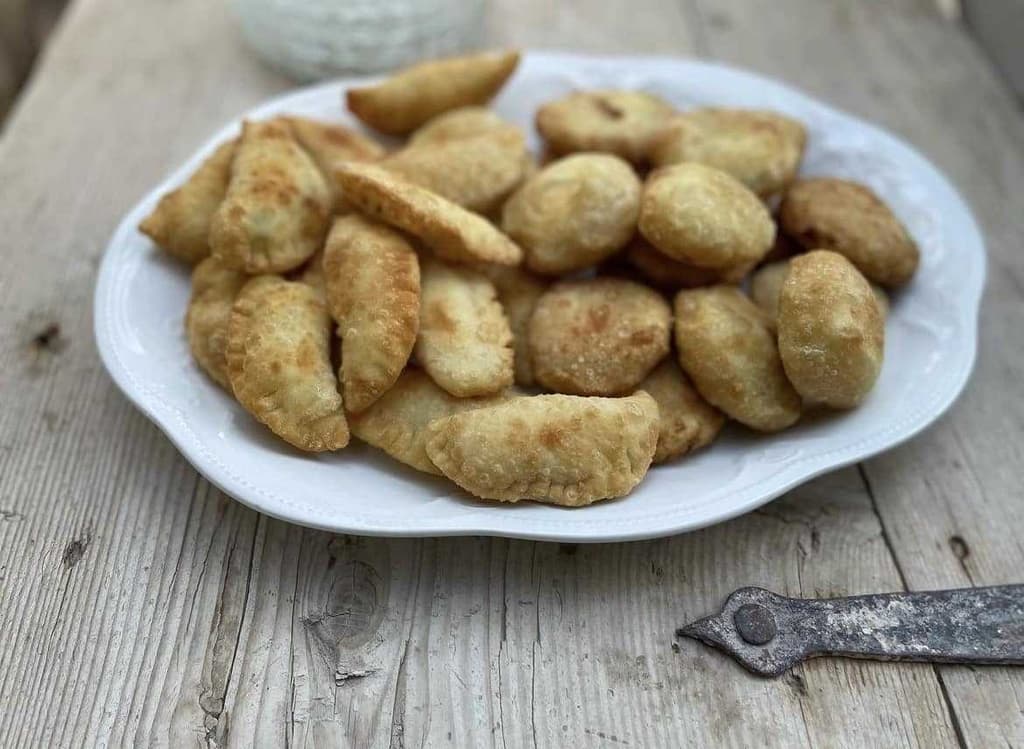
Rethymno Water Pies
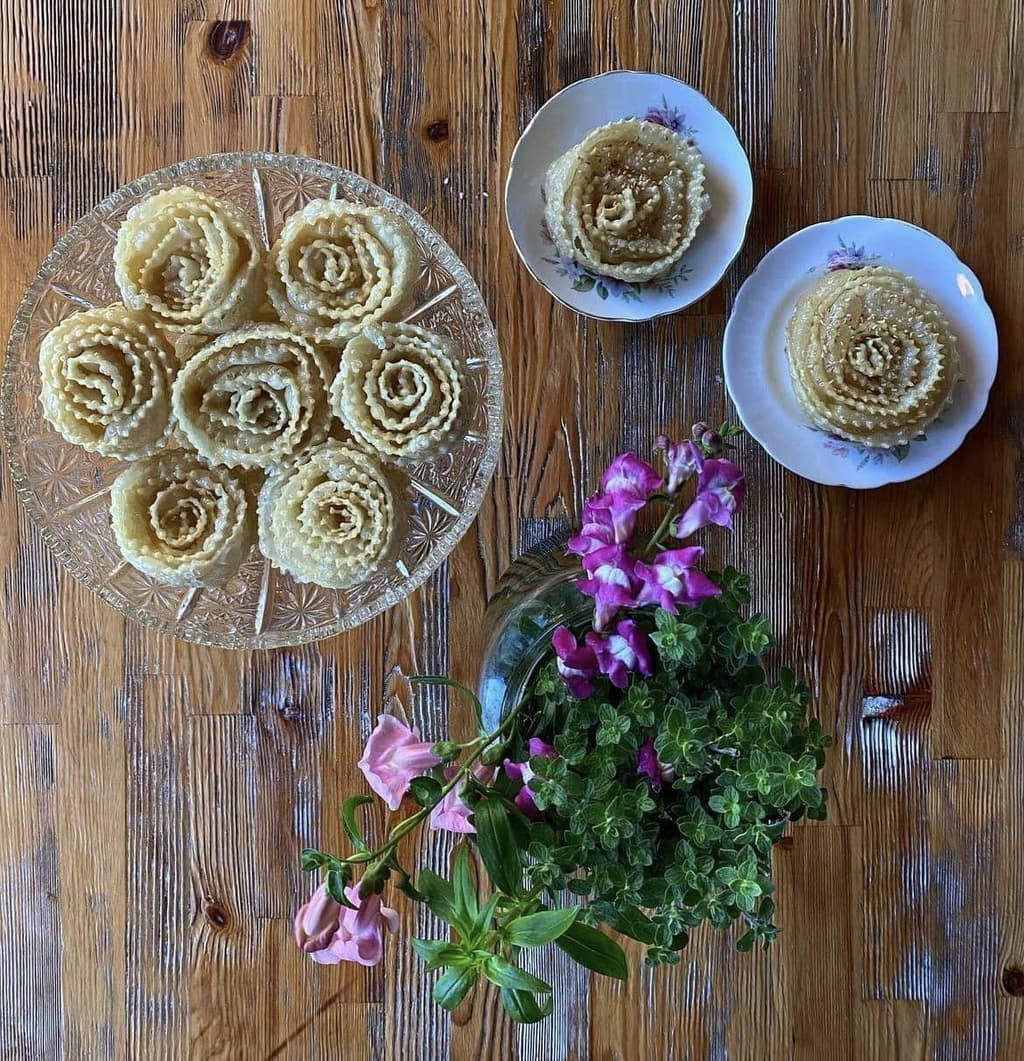
Xerotigana
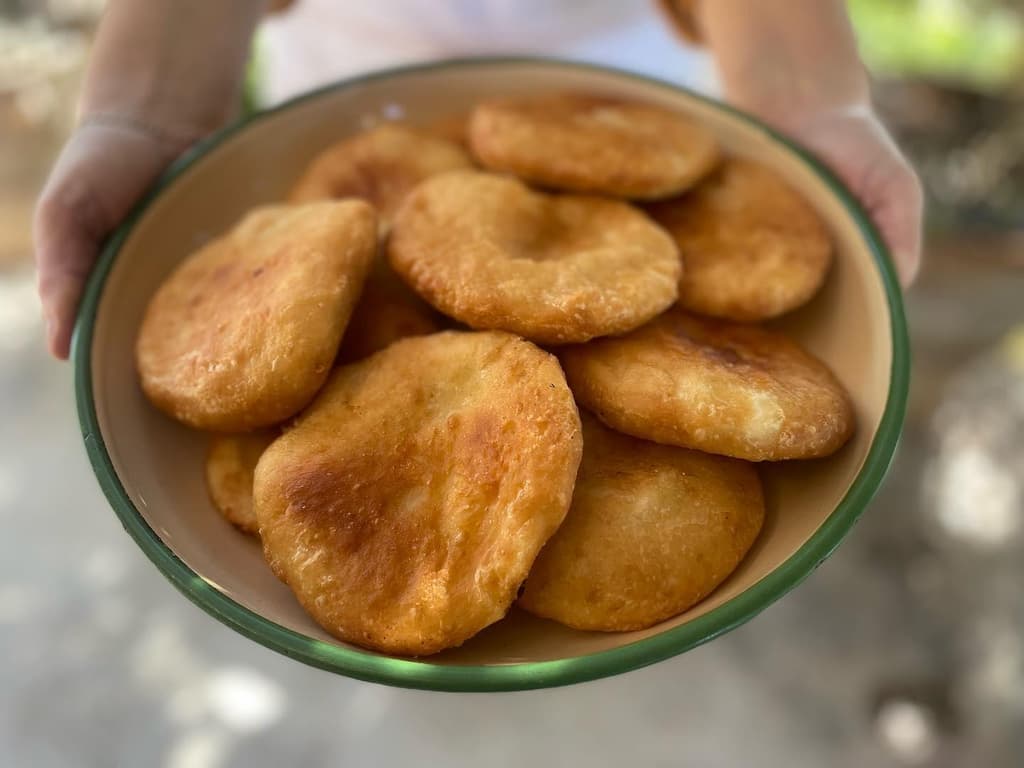
Agnopites
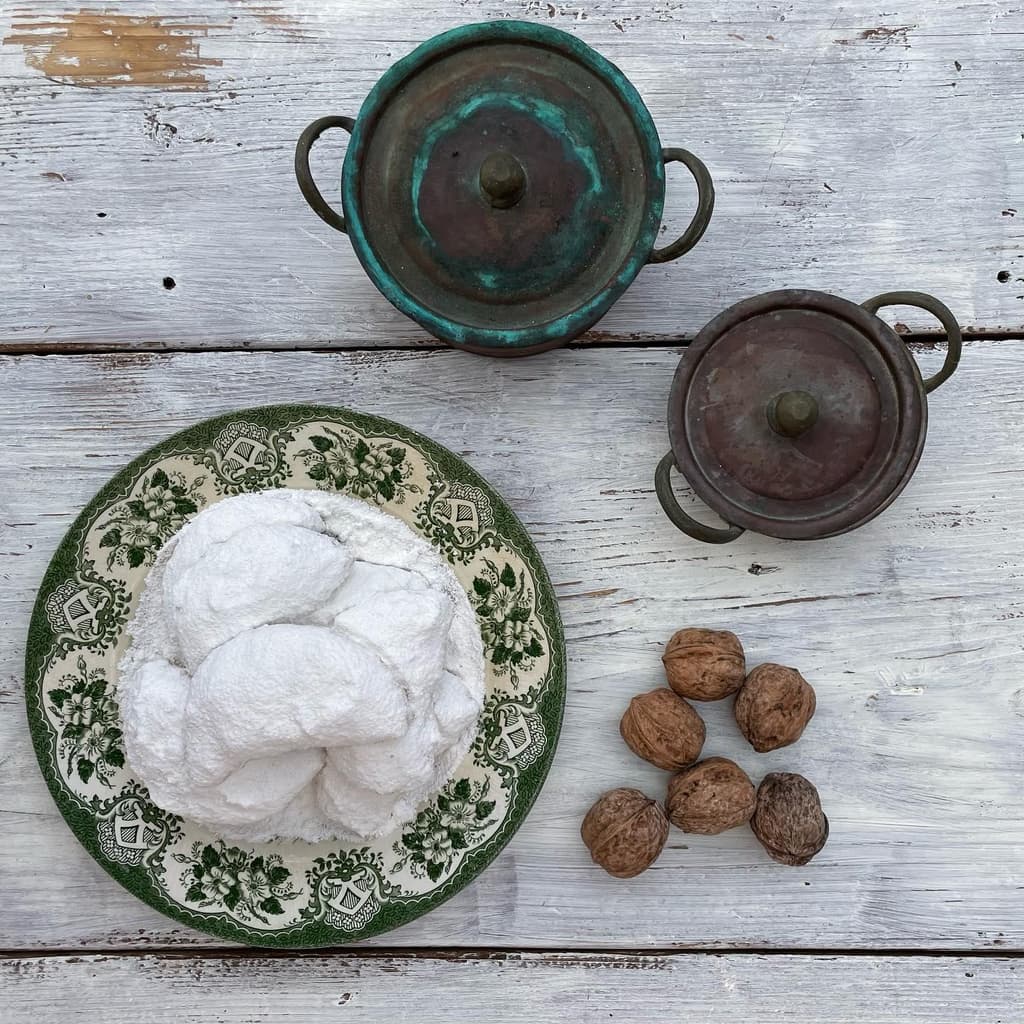
Patoudo

Safidota

Kakavia (Fish Soup)
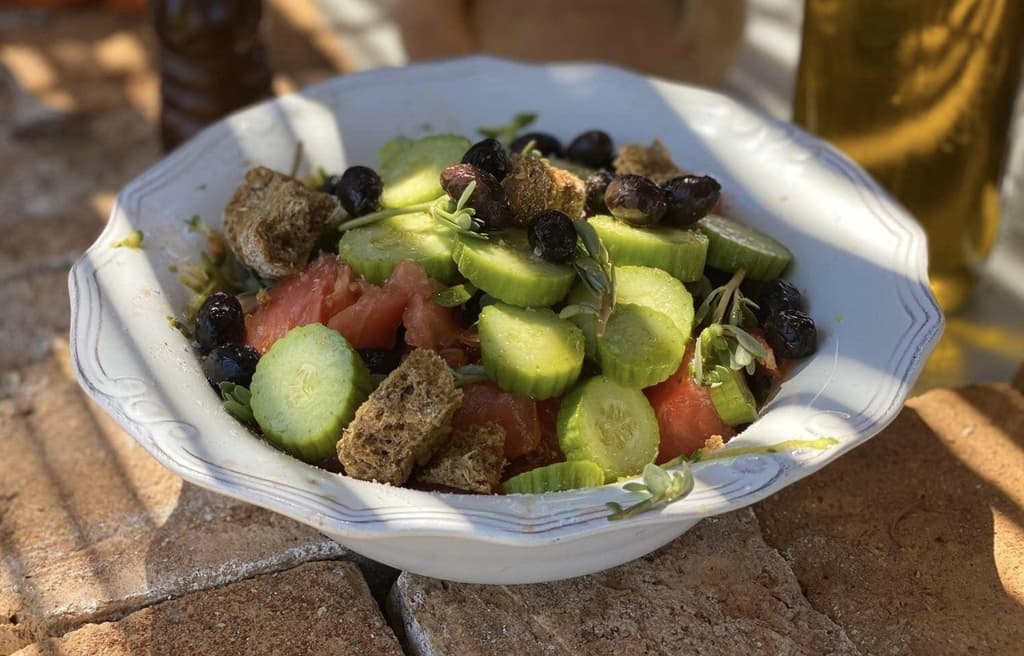
Cretan Greek salad
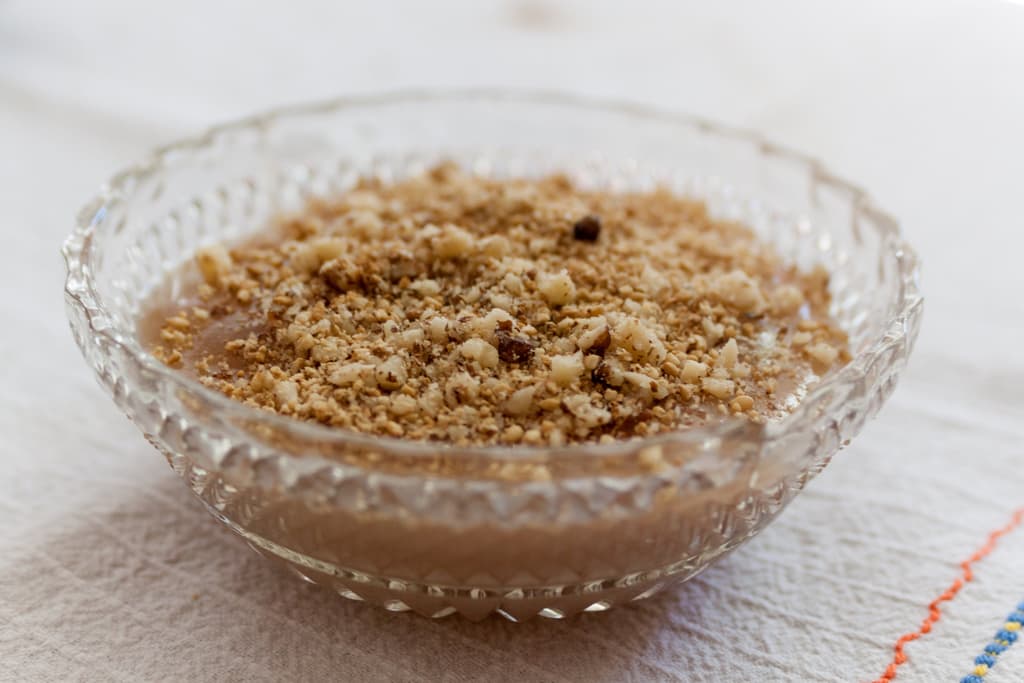
The Sweet Bounty of the Cretan Harvest
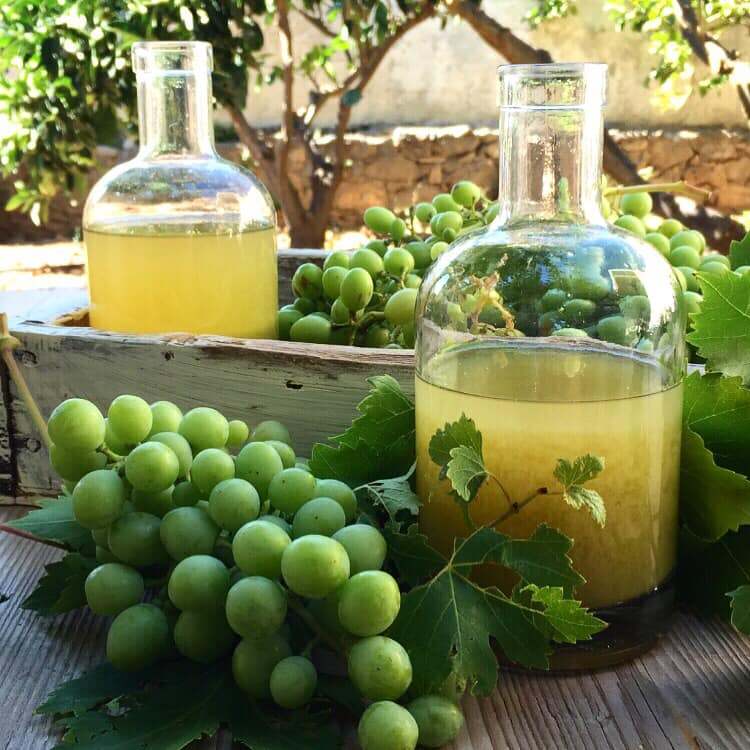
Okra and Unripe Grape
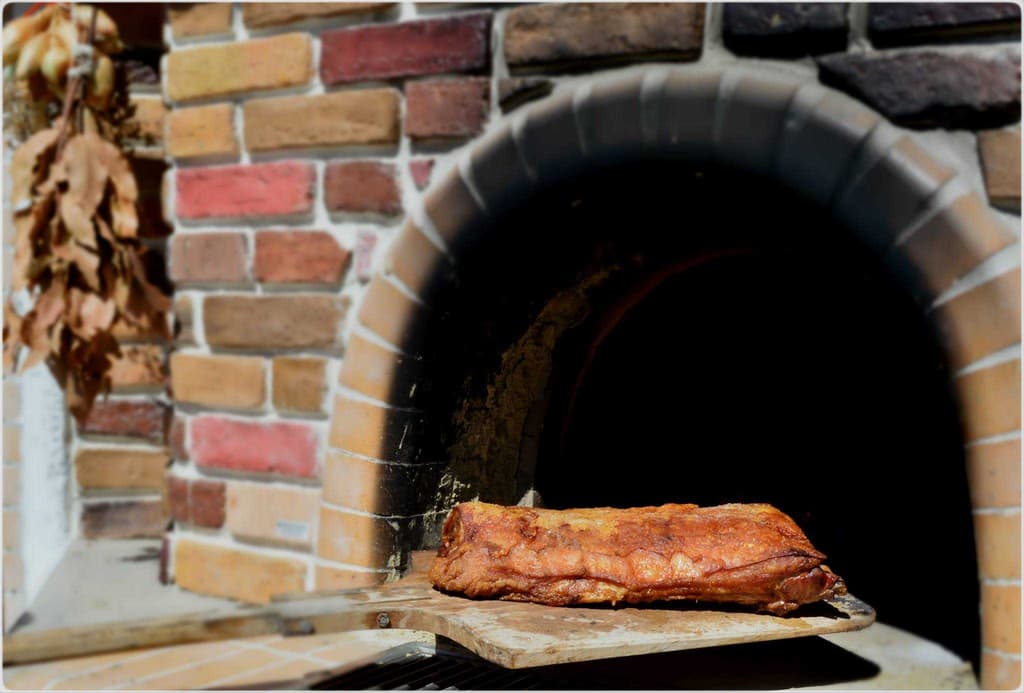
Kapriko
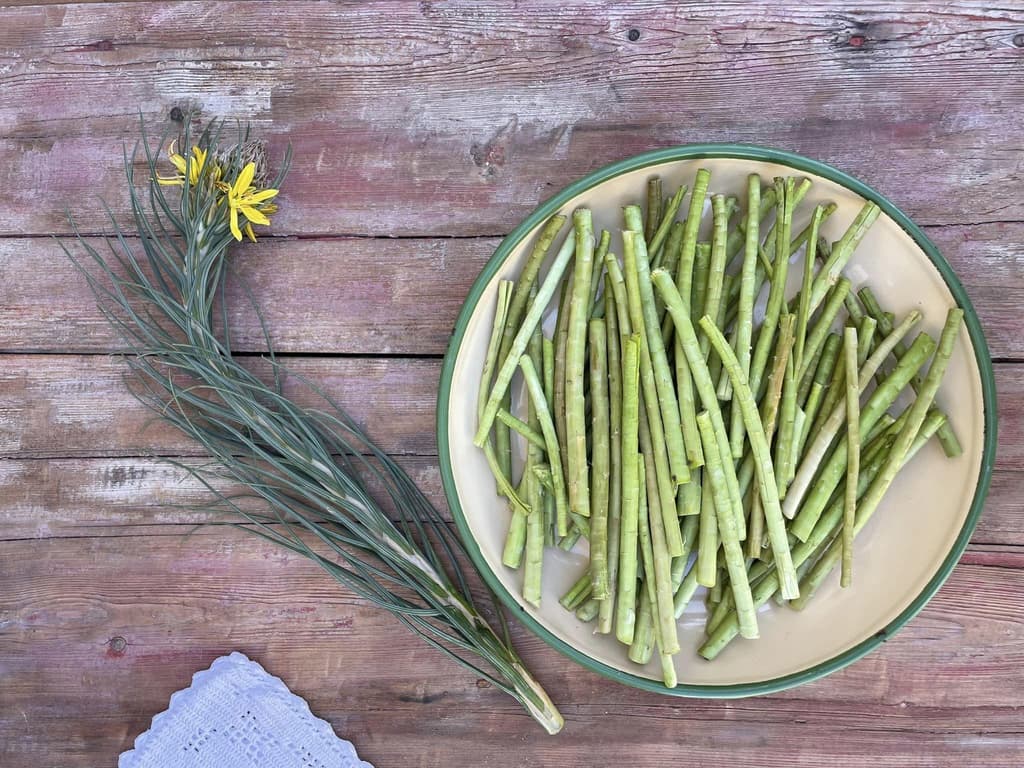
Discovering and Cooking Asphodelaceae: A Taste of Local Cuisine
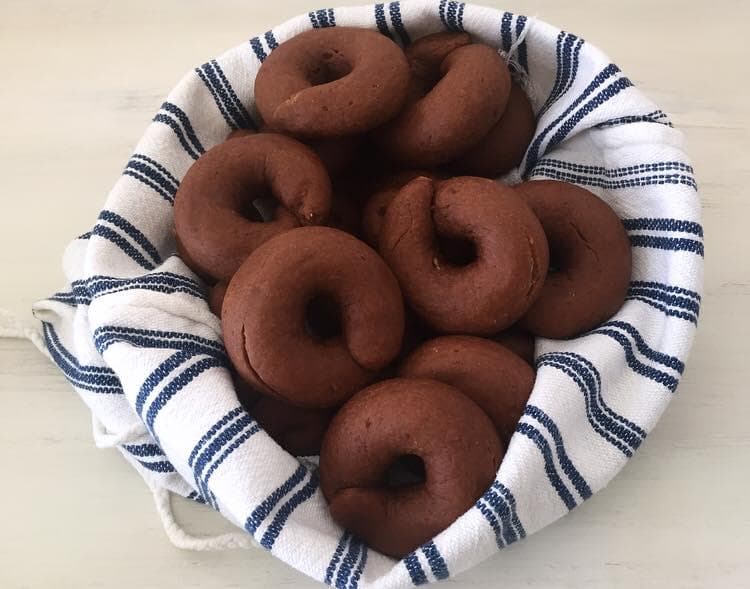
Moustokouloura

Pumpkin Stifado
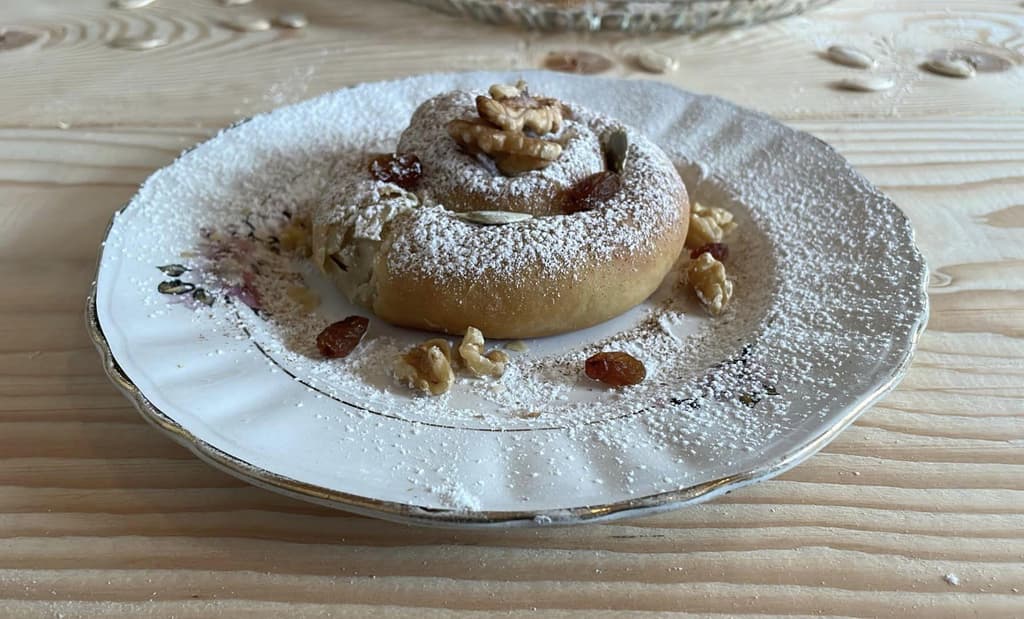
Sweet Pumpkin Pies with Raki Leaves (Oven)
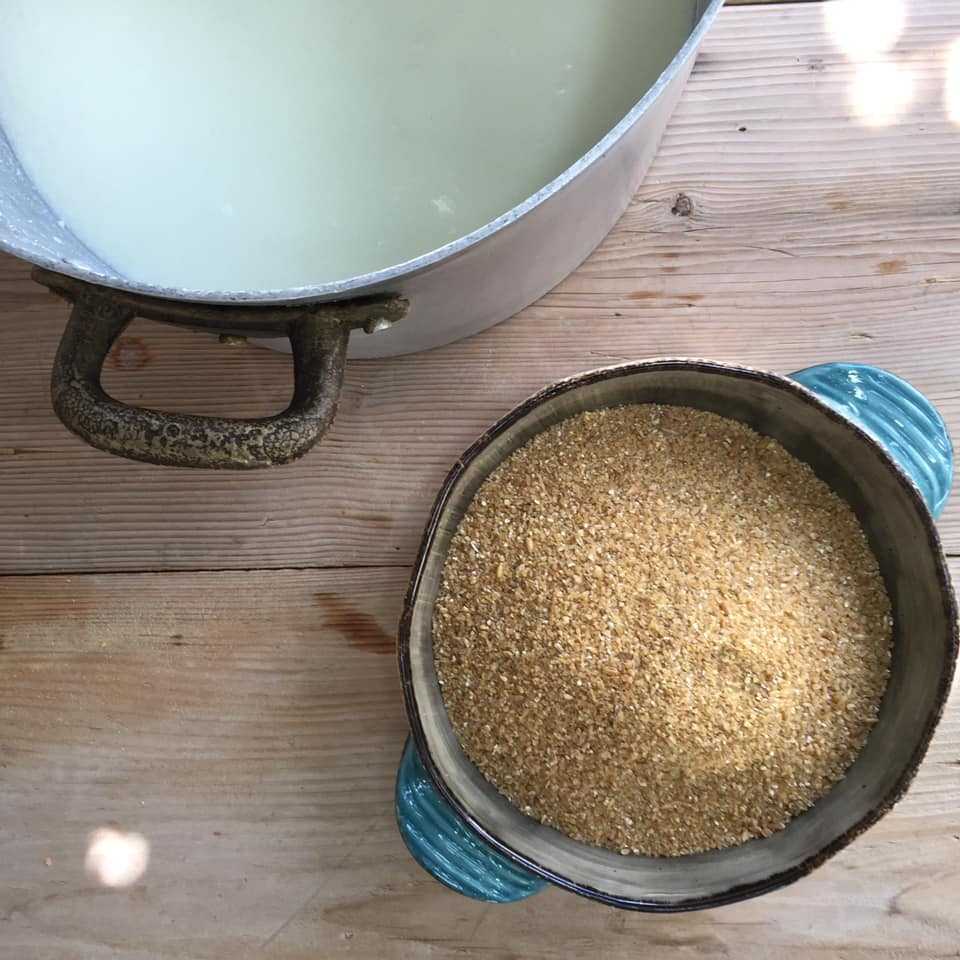
Xinochondros: Sour Bulgur Pasta
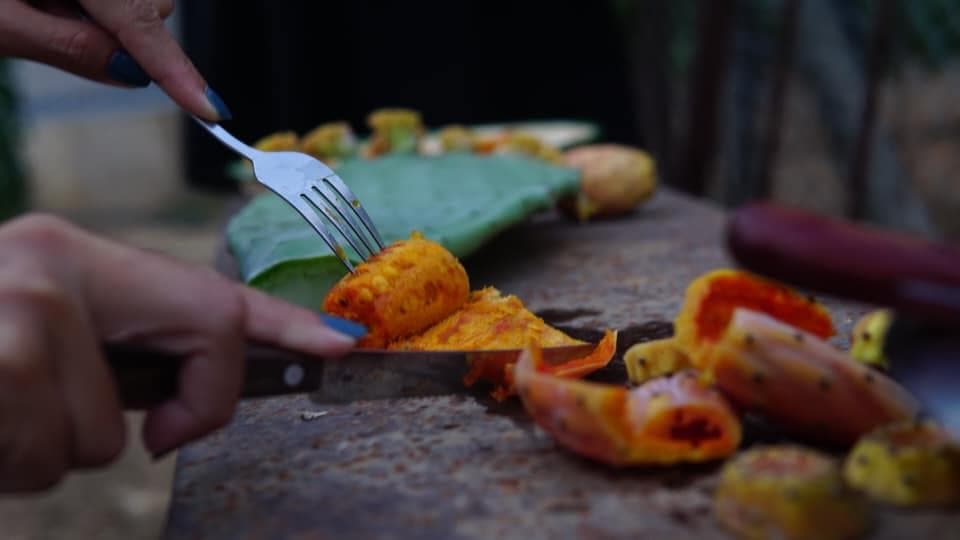
Prickly Pear or Indian Fig
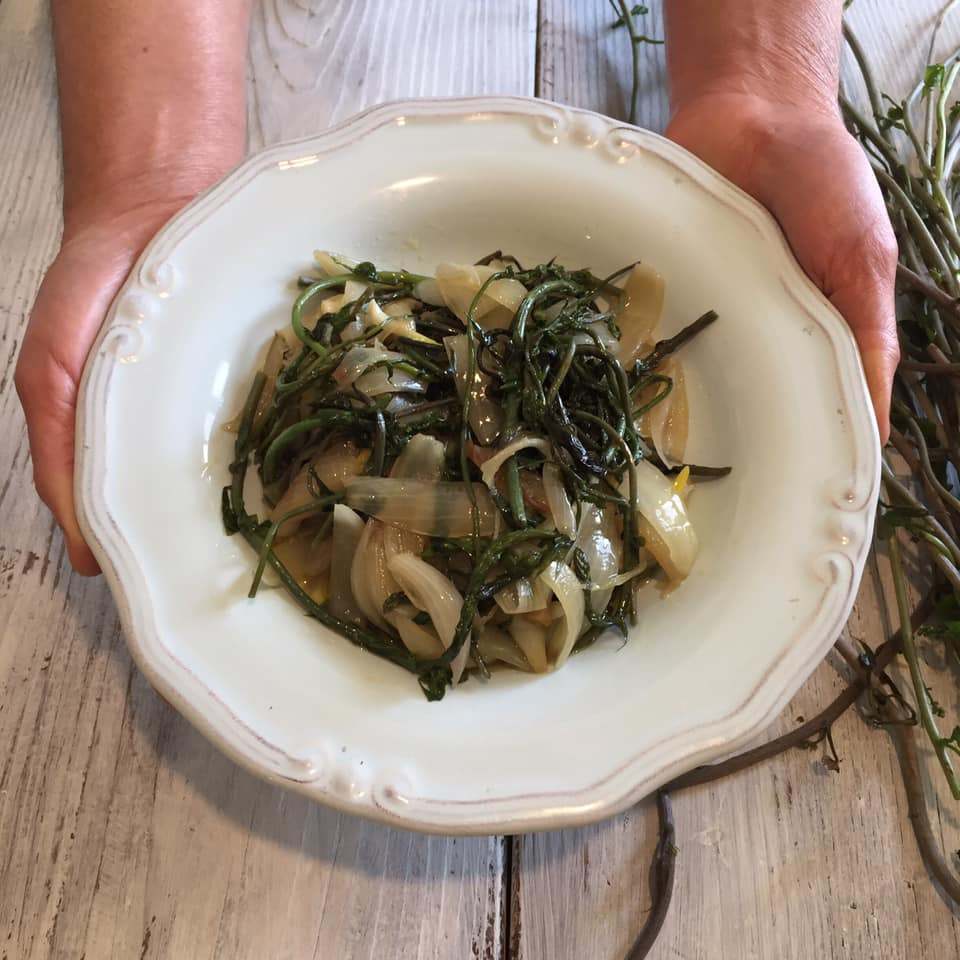
Black Bryony

Tahini Soup without Oil
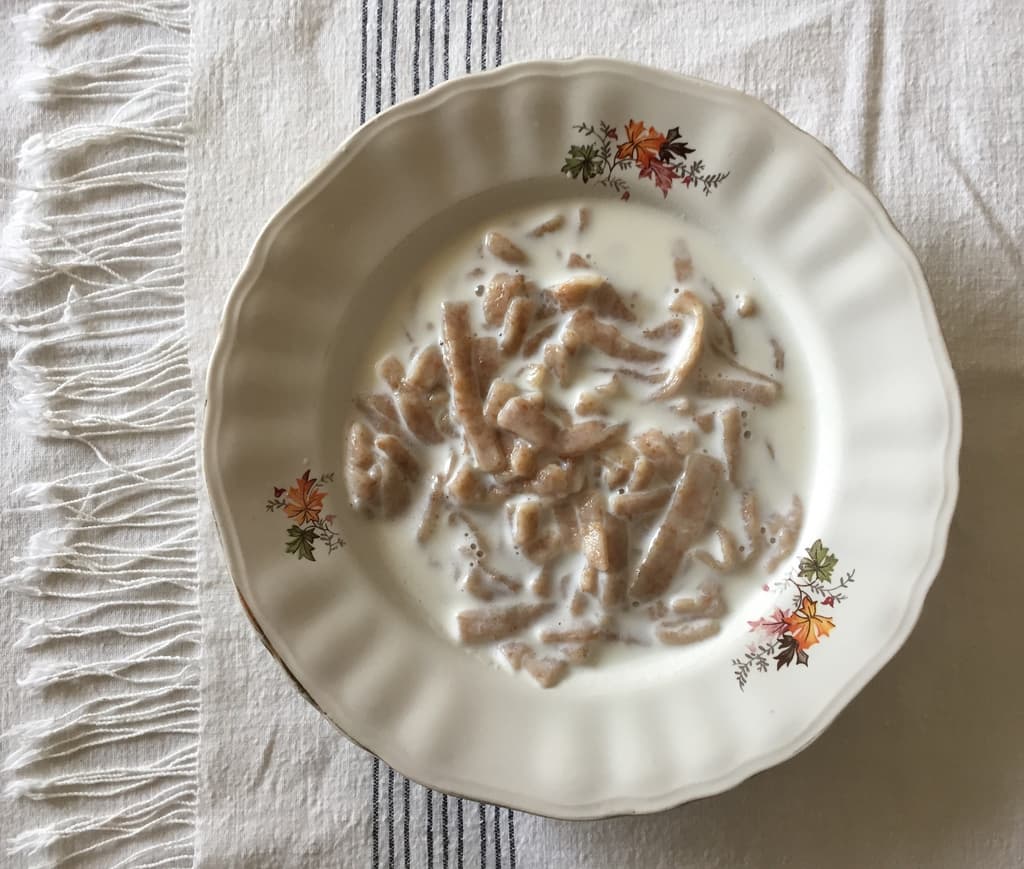
Chylofta with Milk
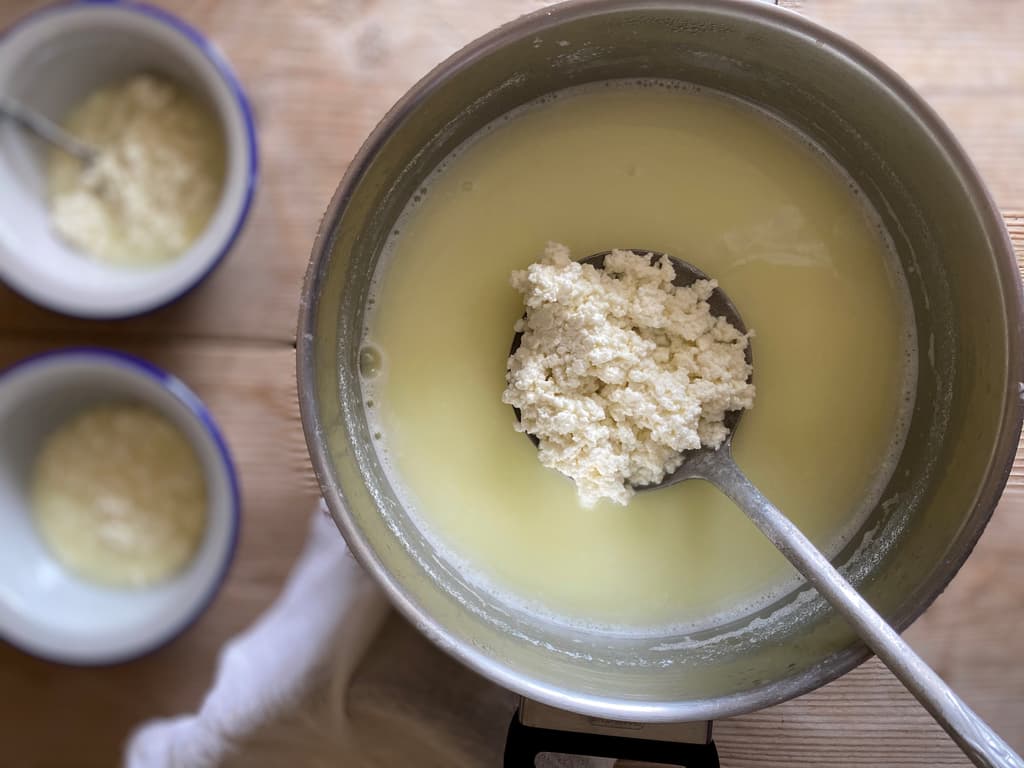
Tyrozouli or Cretan Home Cheese
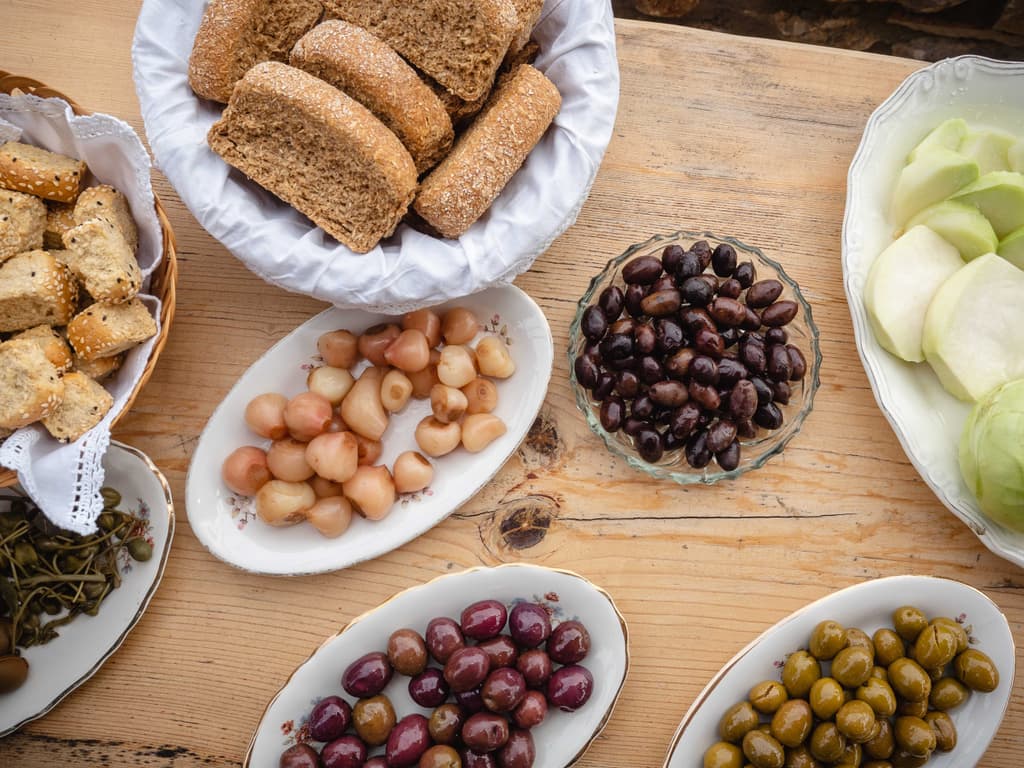
Pickled Tassel Hyacinth

Sourdough Dagoulakia
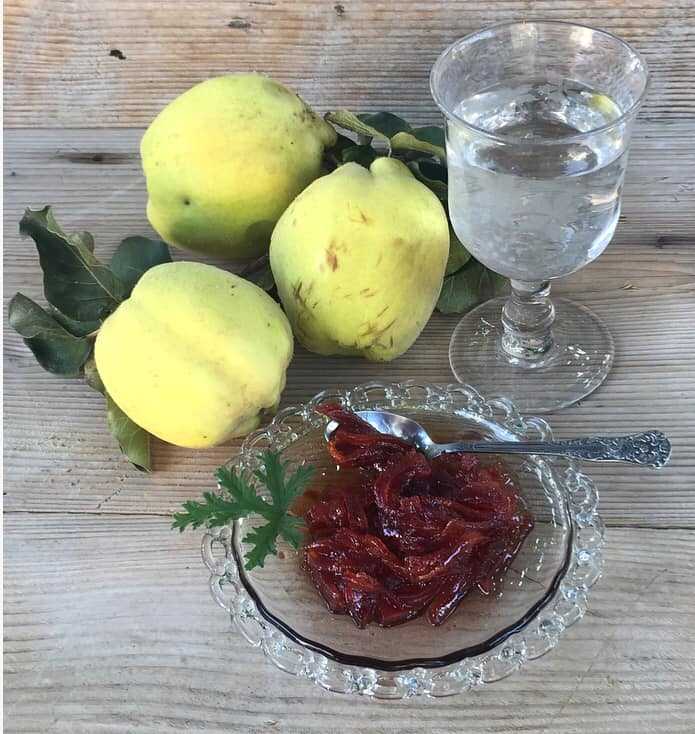
Quince Confection

Delicious Homemade Treat with Lemon Blossoms
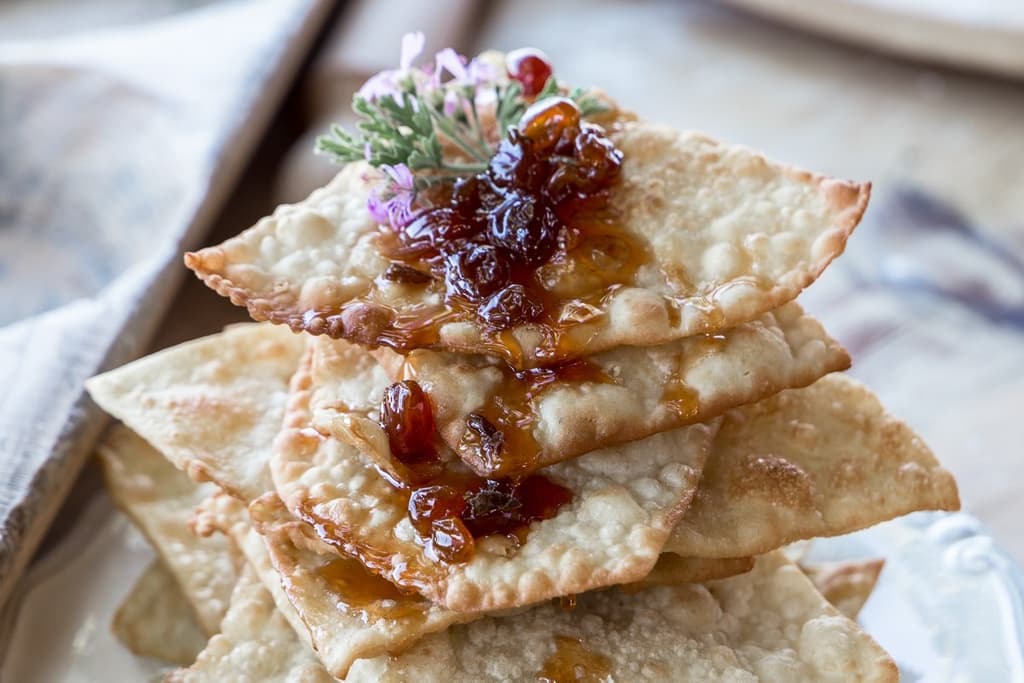
Tiganopites: Greek Fried Pies

Dietary Practices in 17th Century Crete
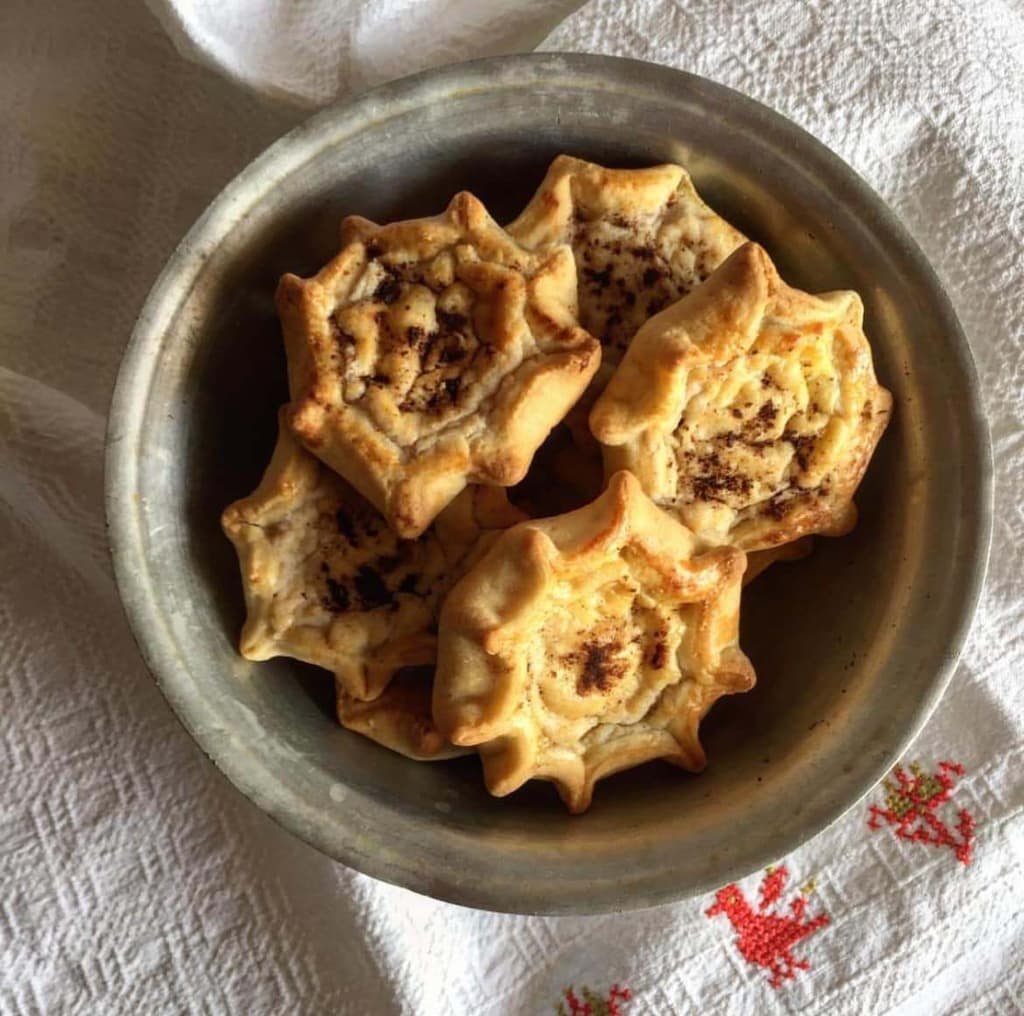
Lychnarakia
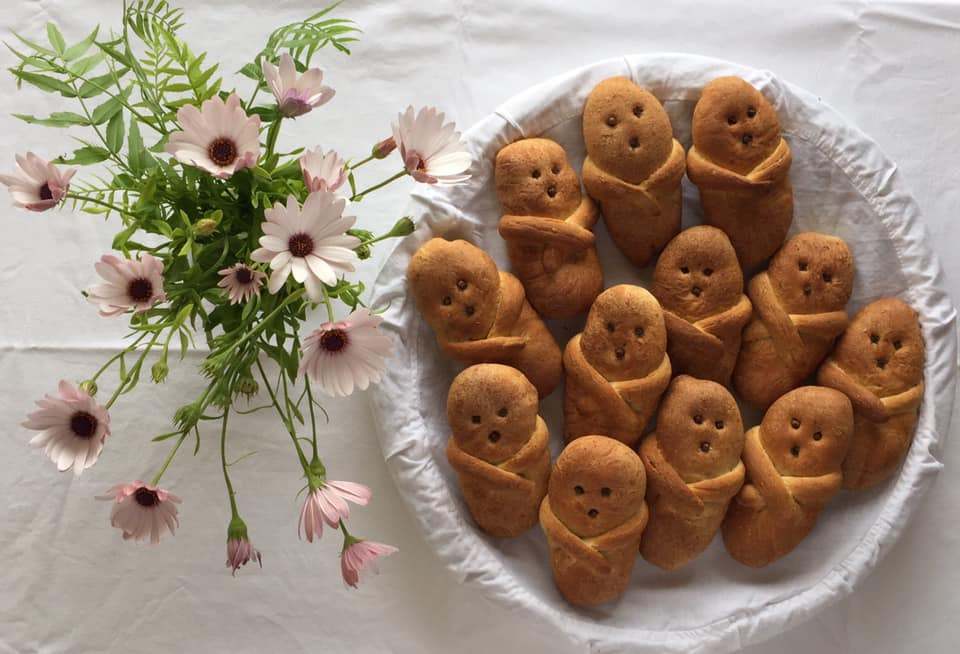
Lazarakia
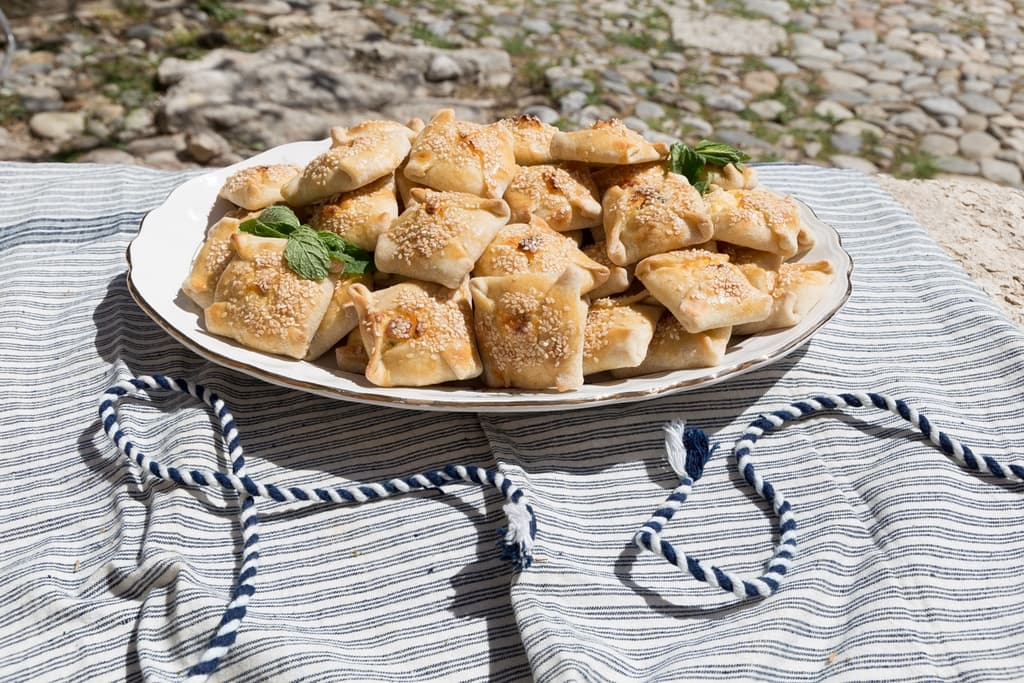
Kalitsounia from Chania
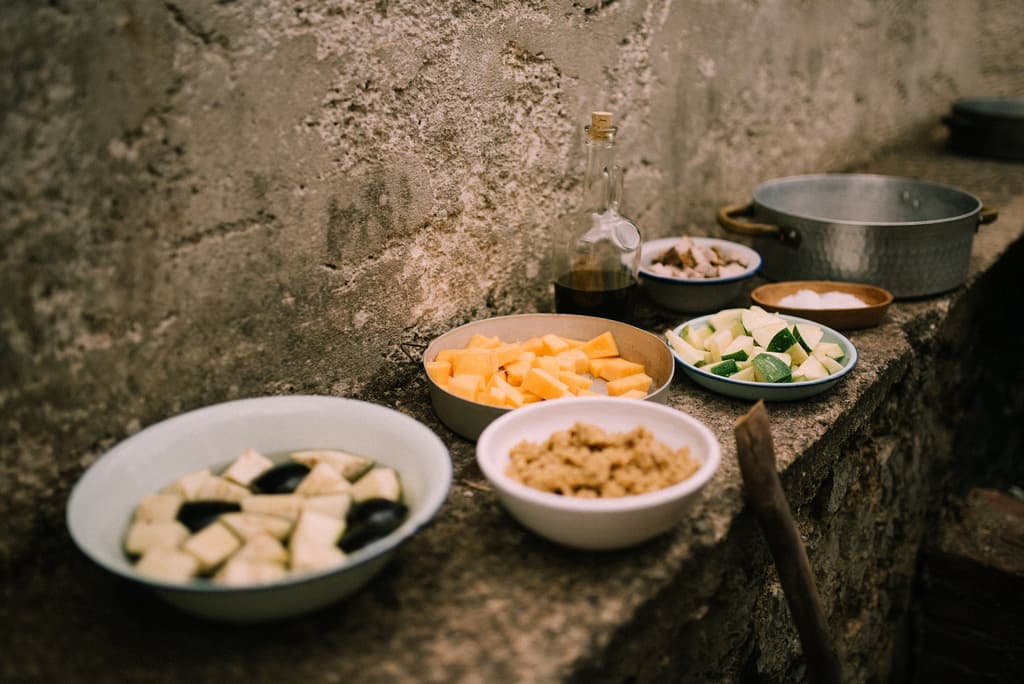
Apaki with Xinohondros and Vegetables
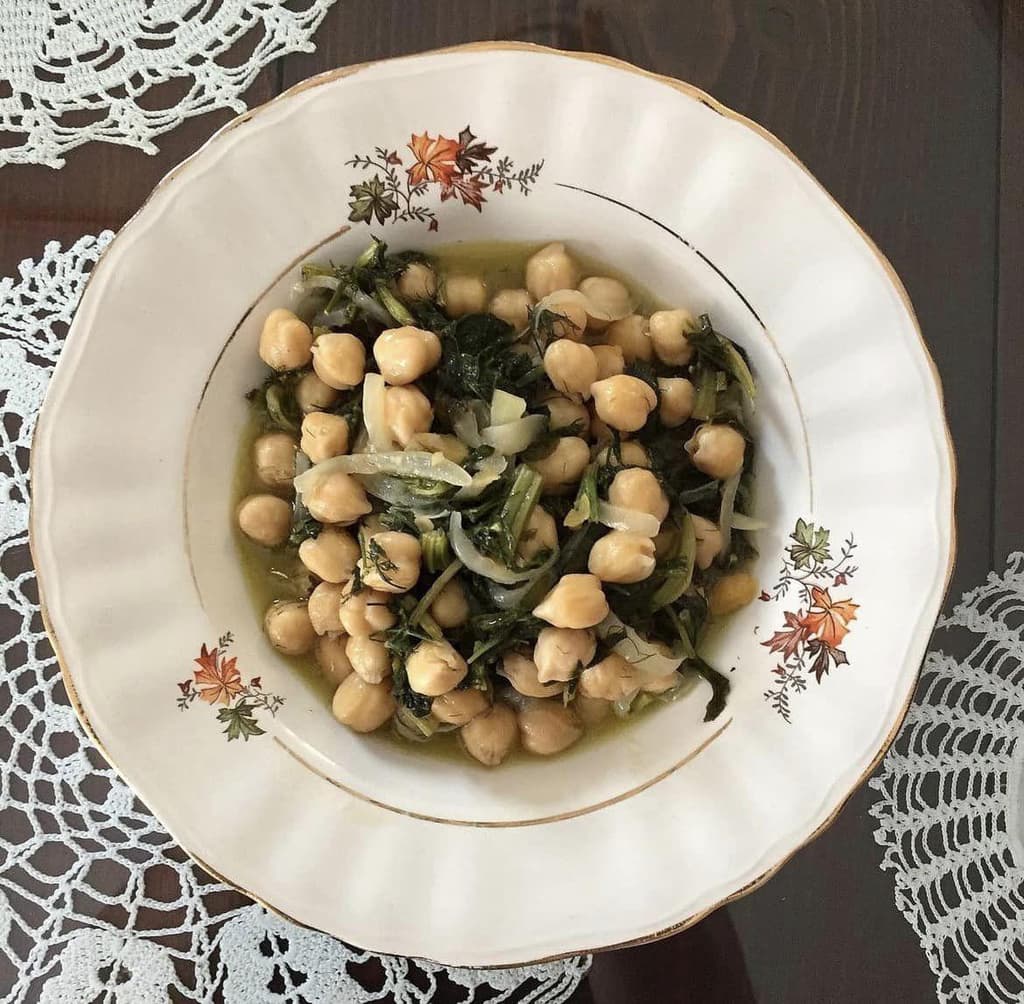
Chickpeas with Yachnera: A Delightful Dish
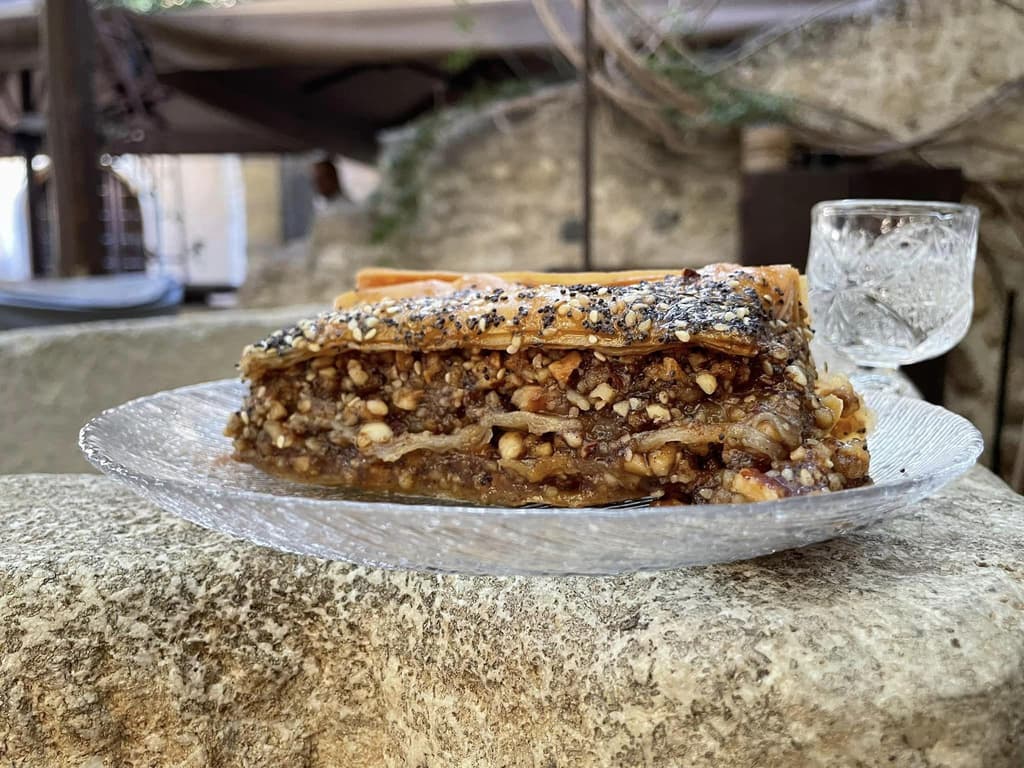
Gastrin
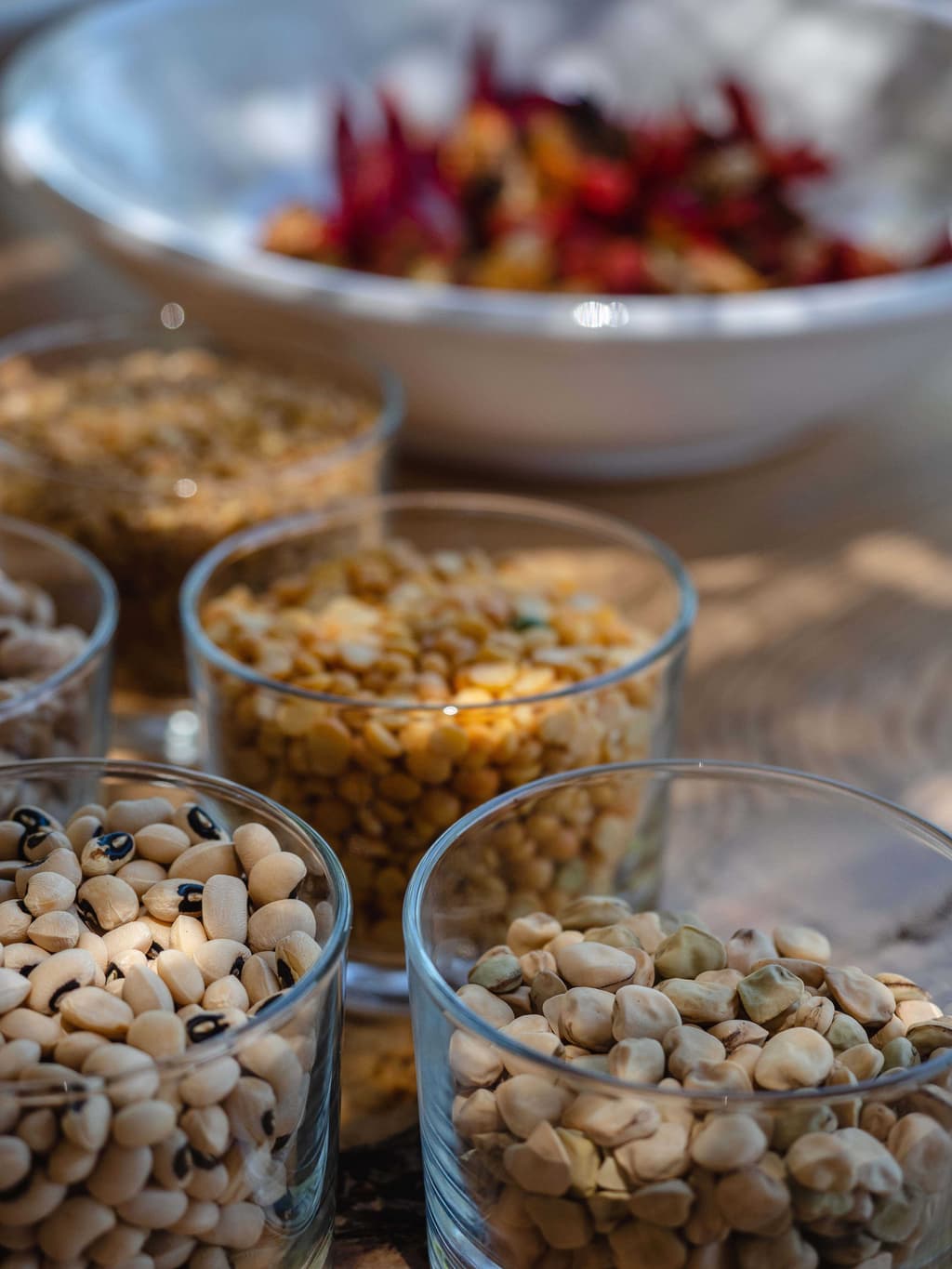
Fotokollyva
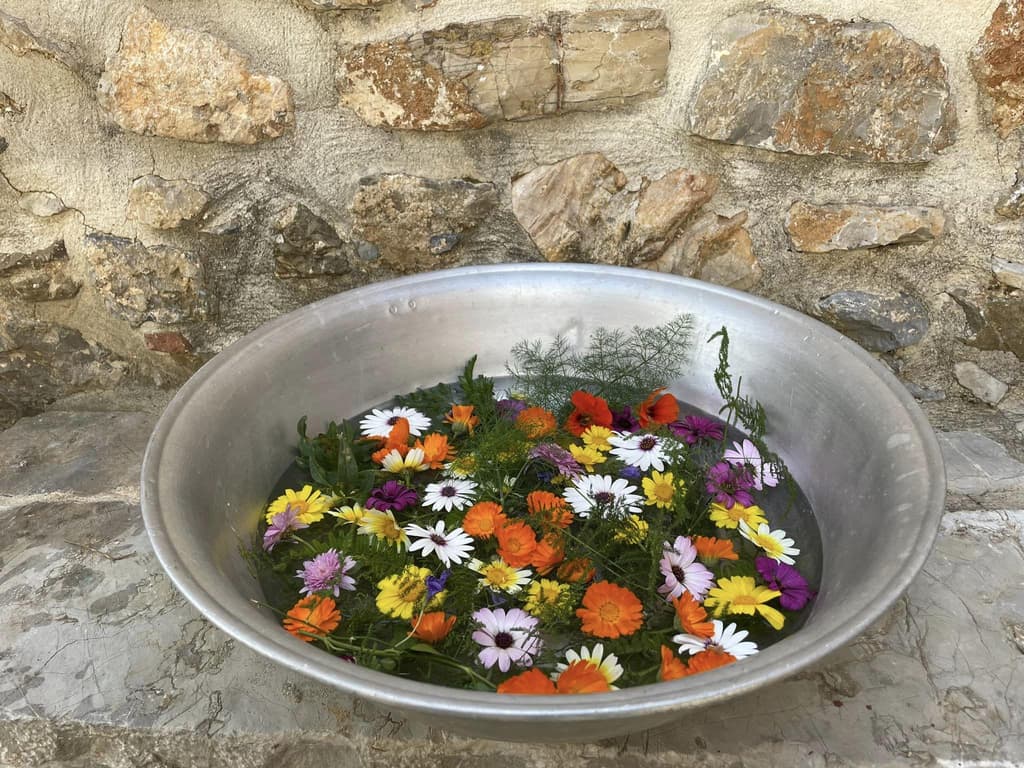
Dyeing Easter Eggs with Madder Root and Flower Blossoms
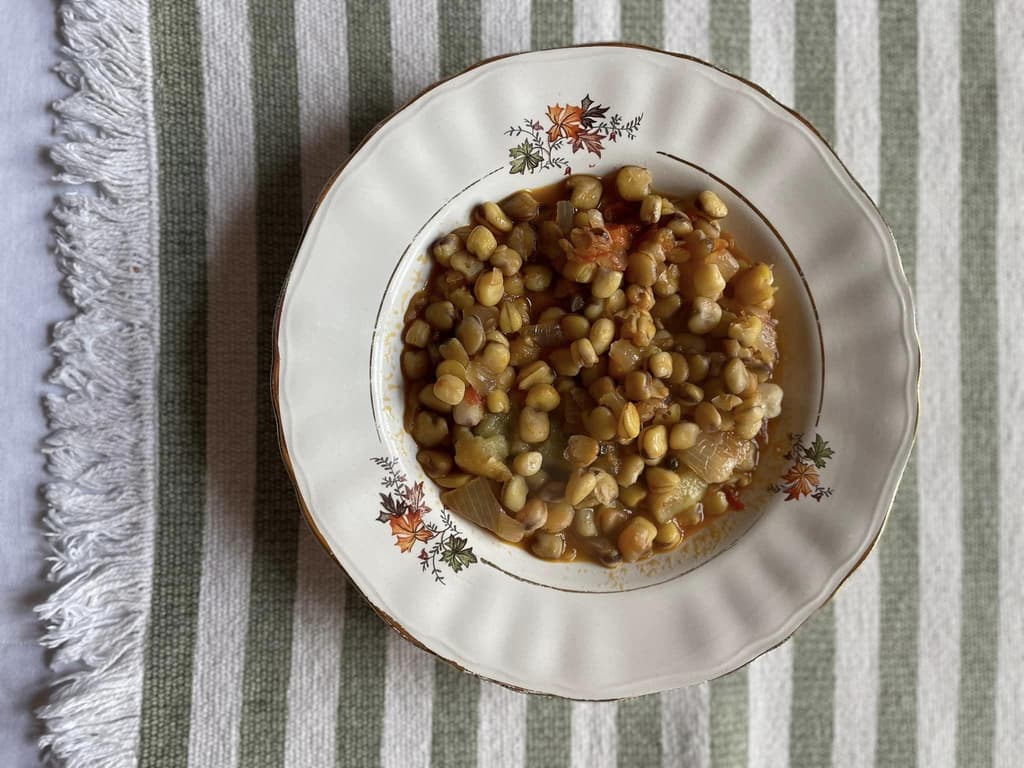
Biza or Manarolia Stew with Eggplants

Antikristo or "Ofto" Meat
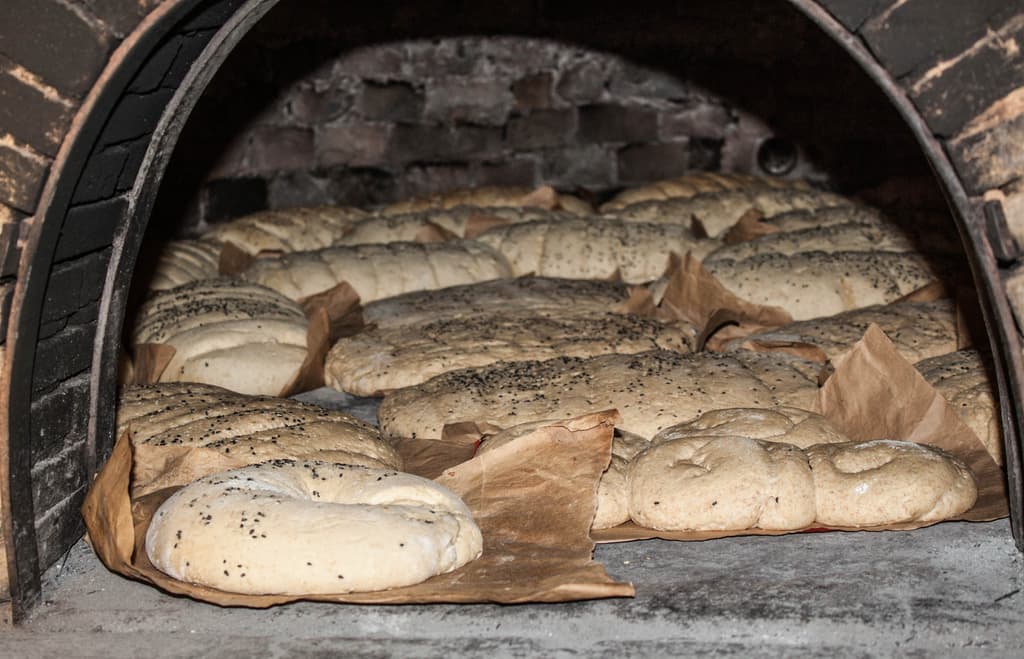
Eftazymo Bread
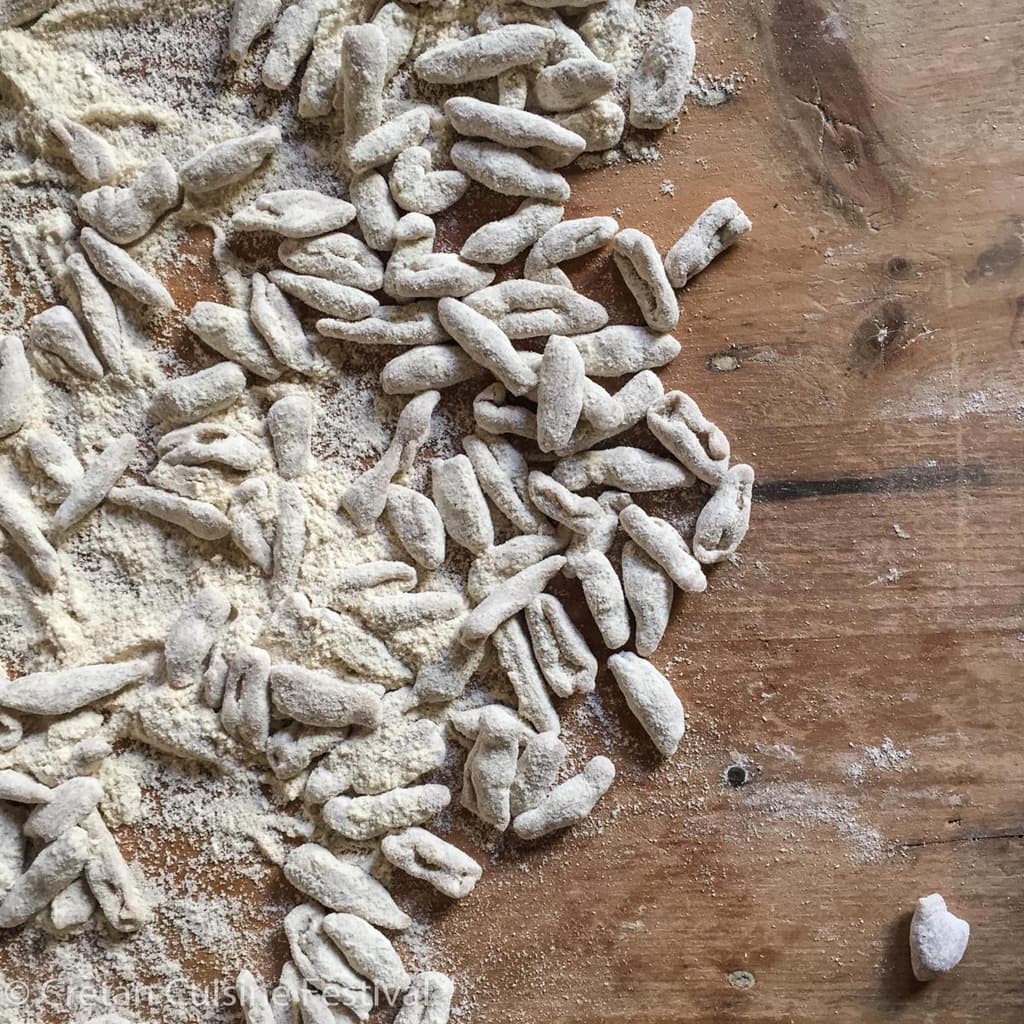
Skioufichta Macarounia
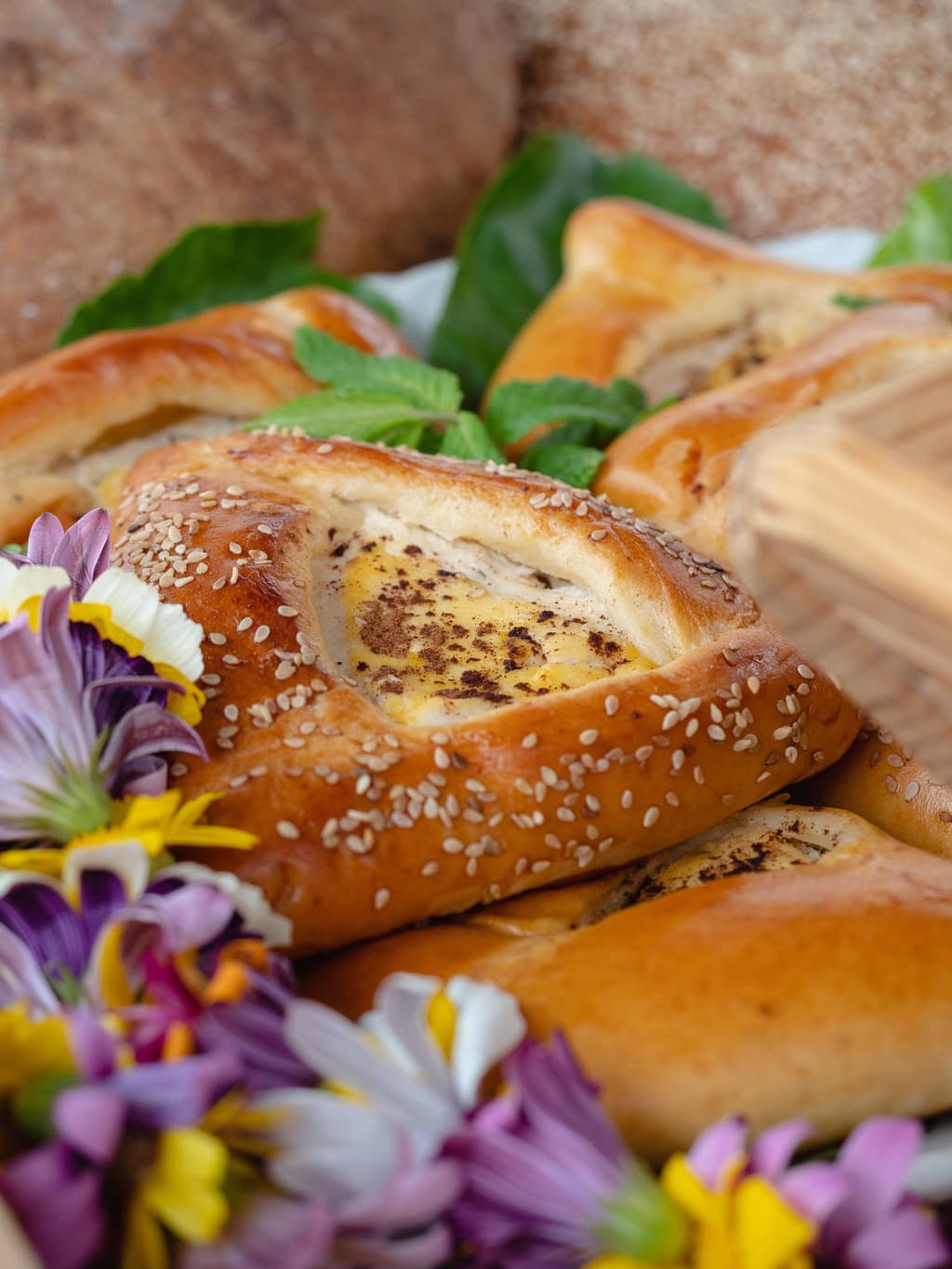
Anevata Kalitsounia
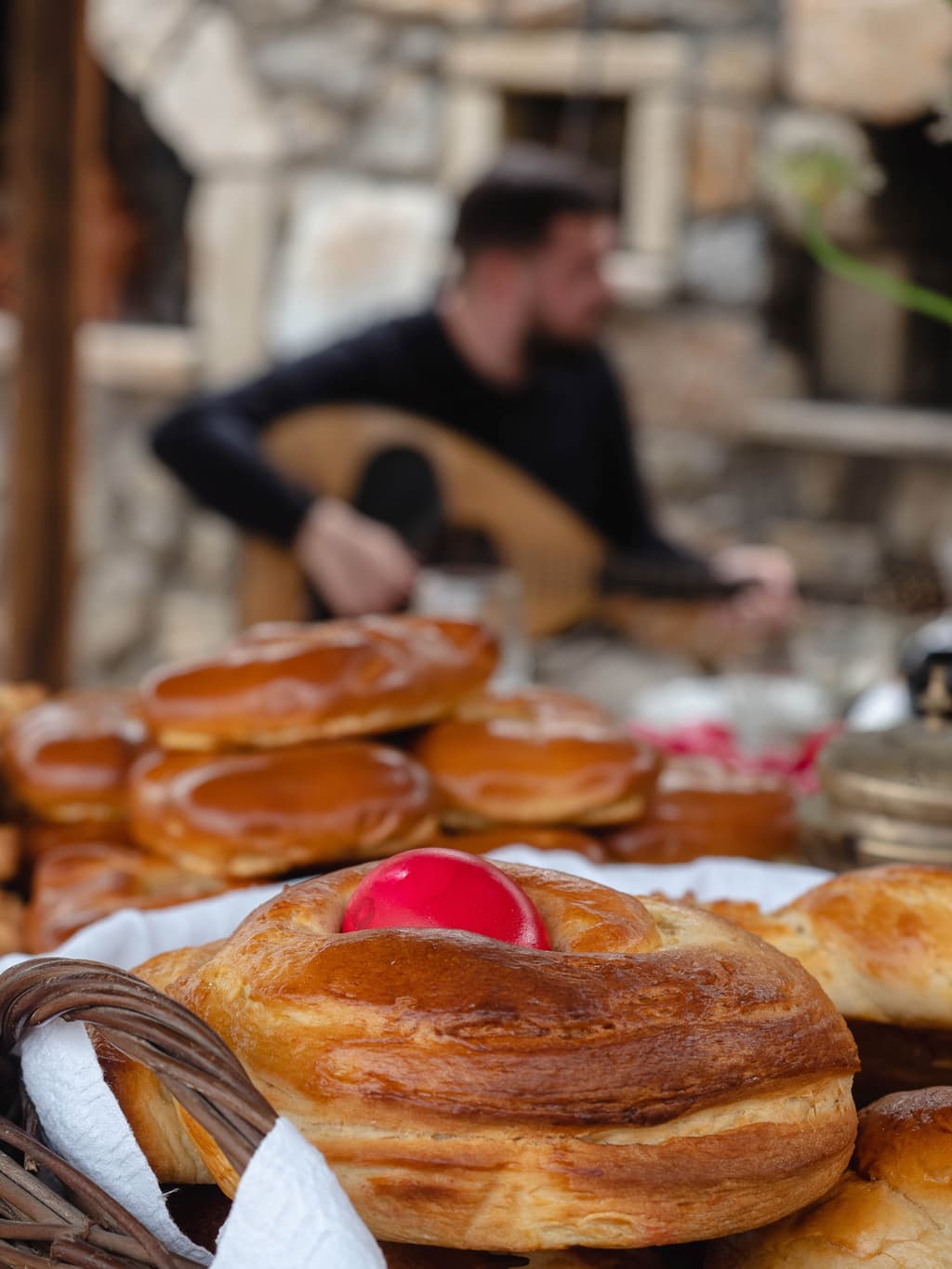
Galatera

Sykomarides
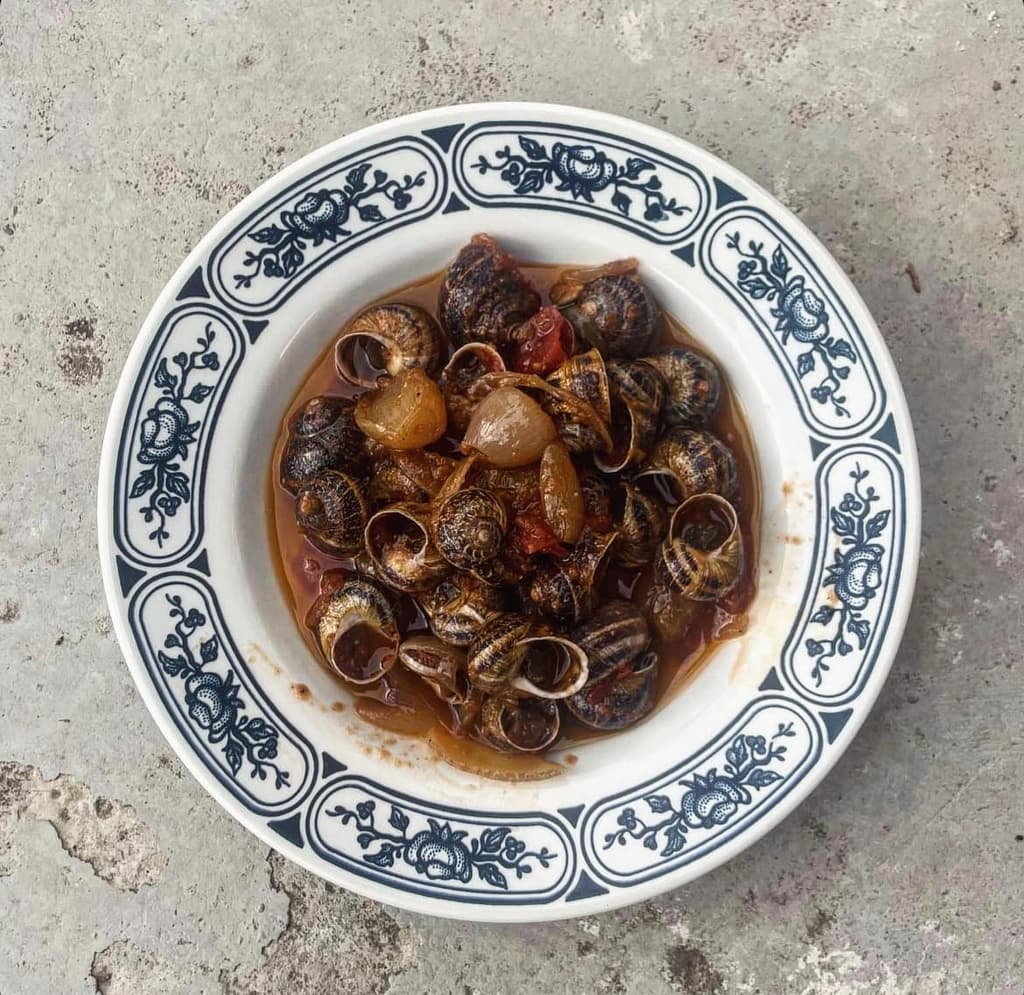
Snails Stifado
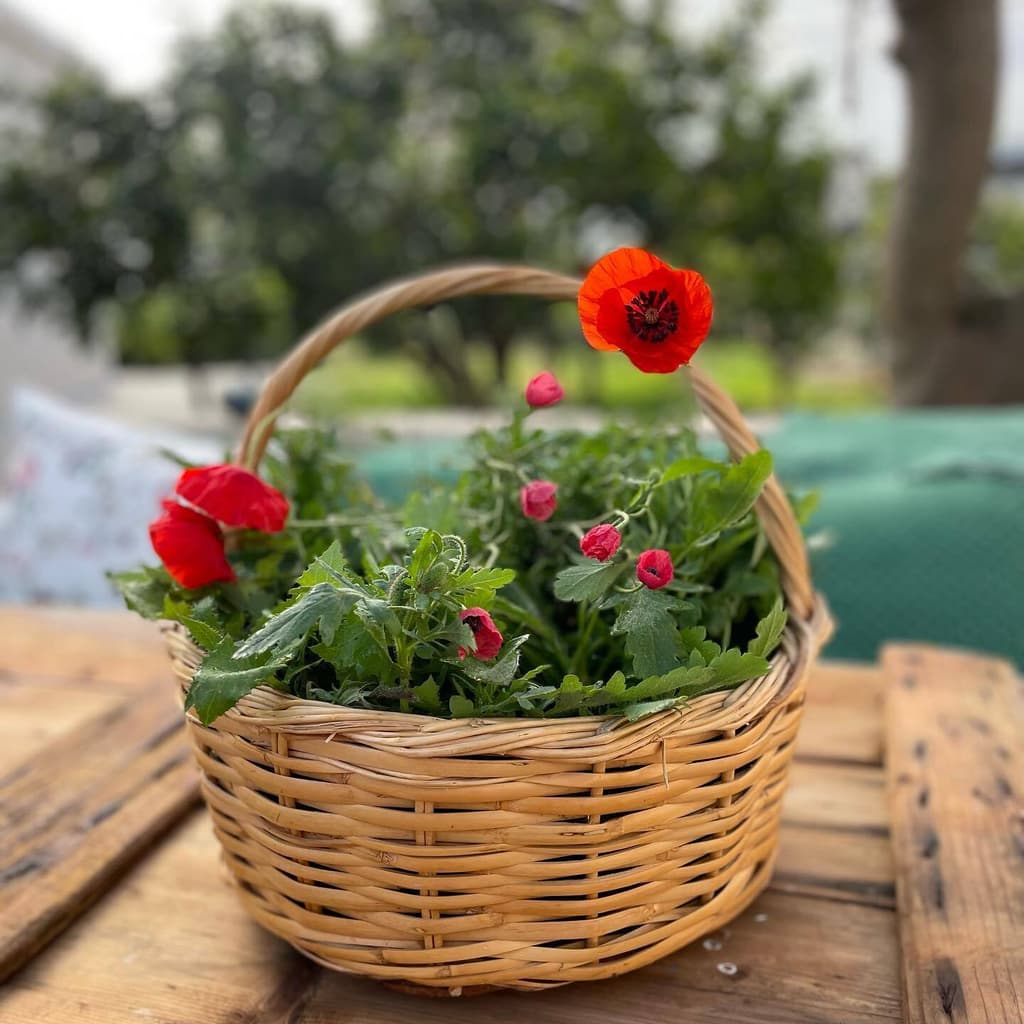
Poppy Pies (Paparounopites)

Beetroot Salad
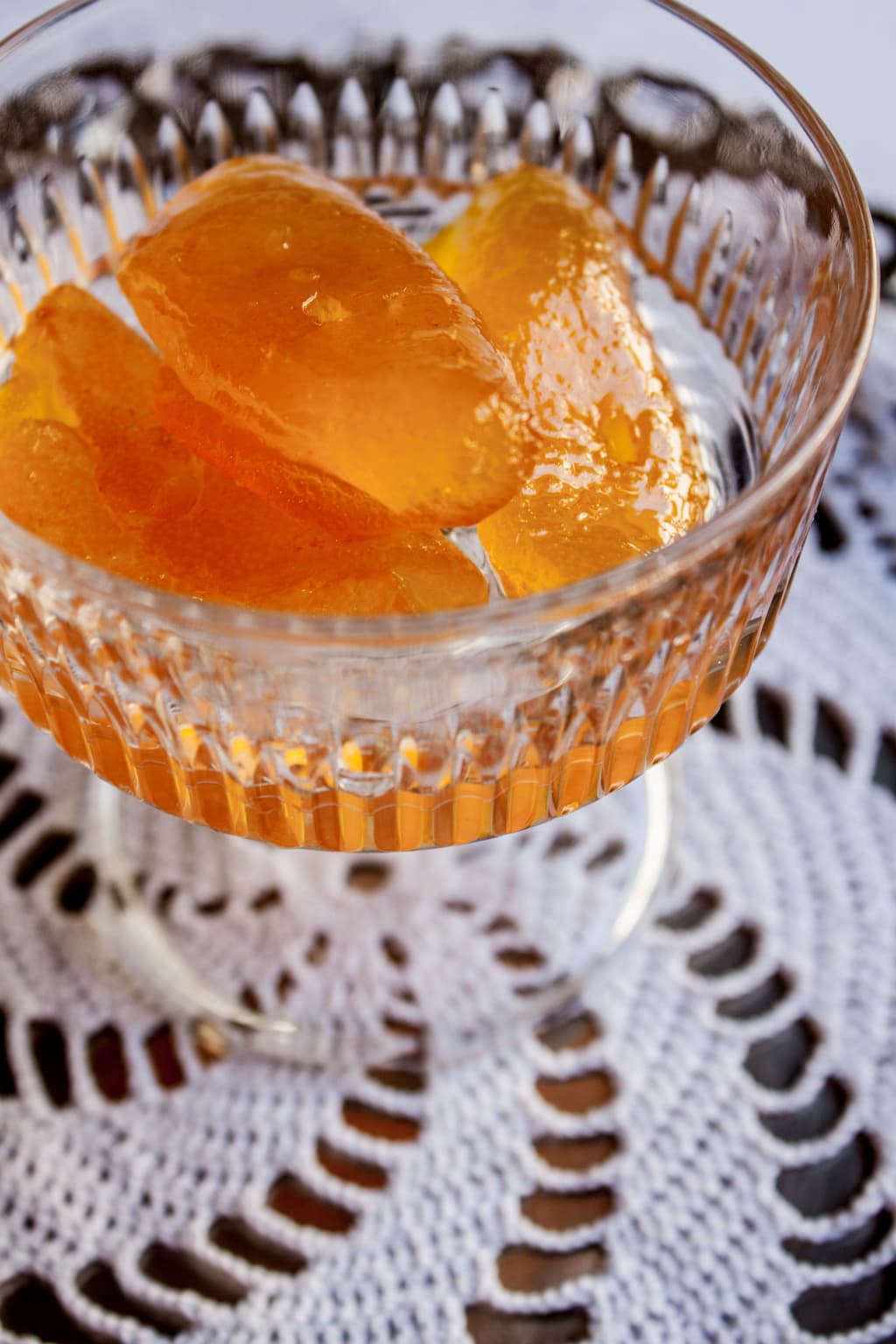
Bitter Orange Spoon Sweet (Nerantzi)
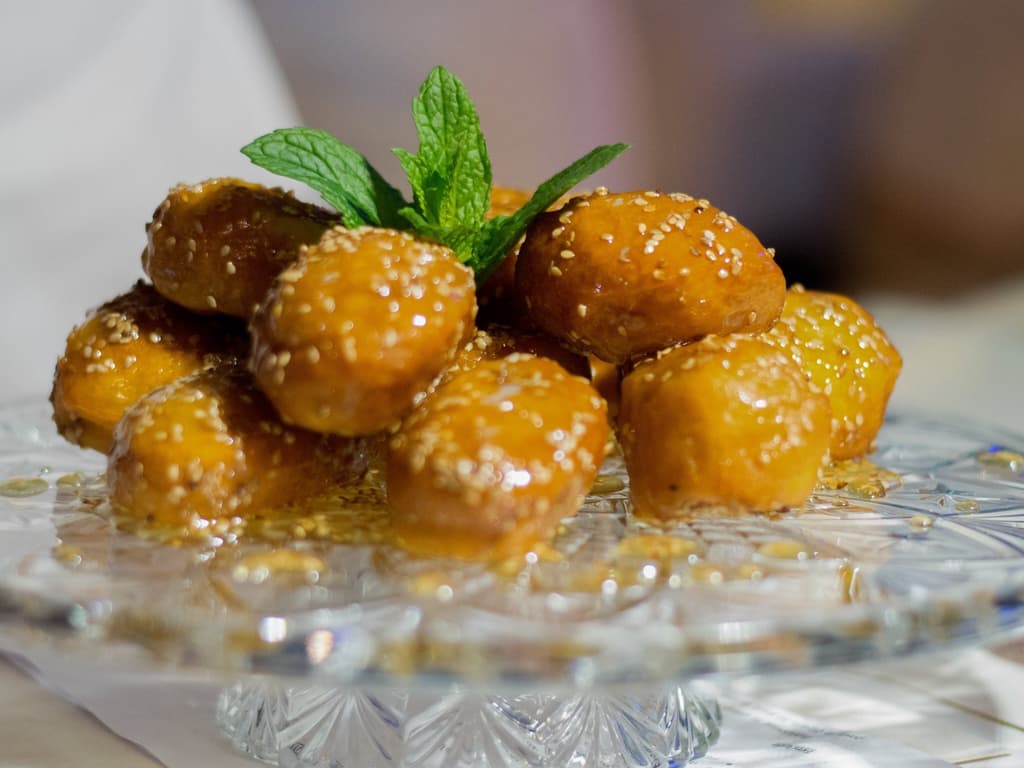
Loukoumia or Koubania

Fasouloryzo
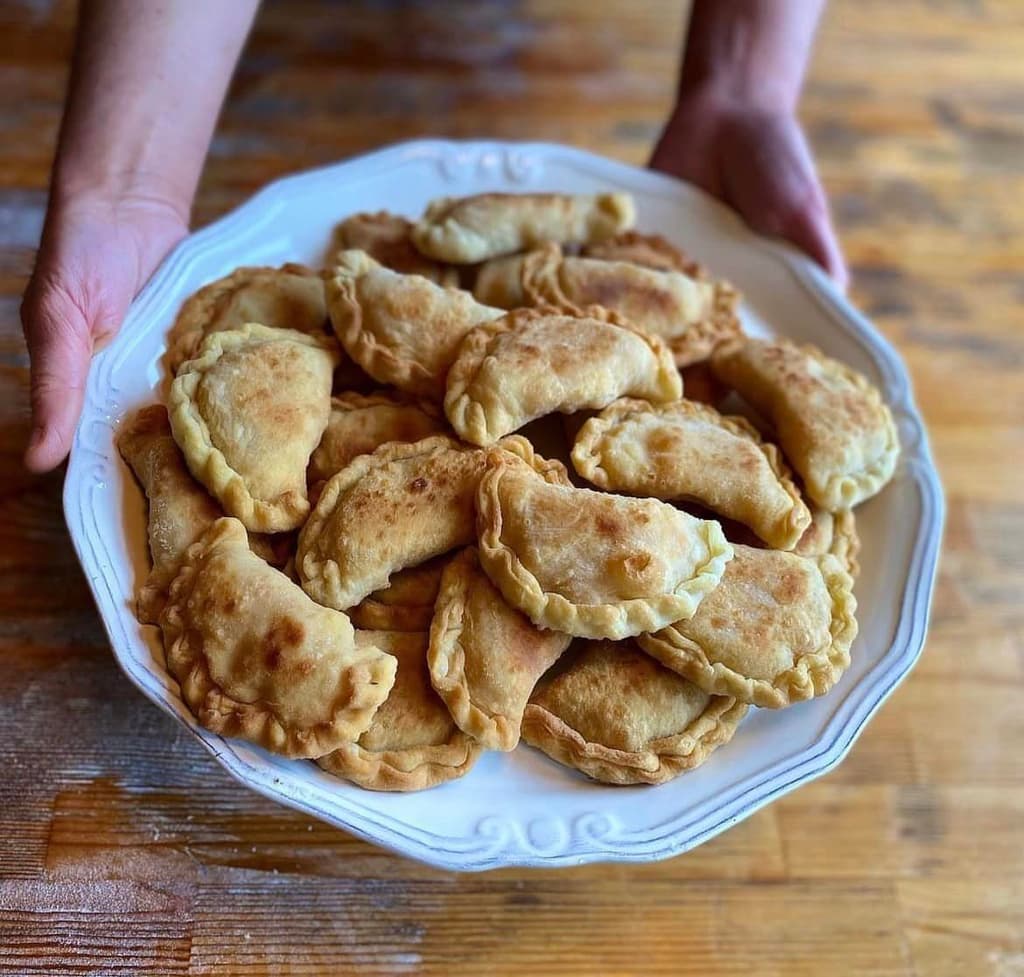
Pumpkin-Filled Pitarakia

Biza or Manarolia Stew with Eggplants


